Discover the incredible resilience and adaptability of the Wild Galapagos Tomato. Learn about its history and how it’s being used in innovative research.
Tag Archive for: Vegetable Tips
Discover the secrets of growing perfect carrots in your backyard. Our guide covers everything from seed selection to harvest time.
The More You Know – the Better You Grow
Eggplant gets its name from a small white Oriental variety that is rarely grown in the United States. We are used to seeing the large, shiny purple elongated globes, so the original name is somewhat of a mystery to most gardeners. It is known by other names around the world, including aubergine in Europe, brinjal in India, eggfruit, tomato-fruited eggplant,
Fresh-picked, home-grown eggplant is mildly sweet and delicious, taking up other ingredients into itself when cooked. The all-too-familiar bitter, off-putting flavors come from fruits picked slightly unripe, trucked to a store that are almost a week old before appearing on the shelves. Grow your own and taste the differences!
History
A member of the Solanaceae or nightshade family, its cousins are tomatoes, peppers, and potatoes. Southeast Asia – likely India, China, Thailand, or Burma – is considered to be the center of origin where it still grows wild; a spiny, bitter, orange, pea-sized fruit that has been cultivated and refined for over 1,500 years.
The earliest uses seem to be medicinal as some of the earliest written Ayurvedic texts dating to around 100 BC describe the health benefits of using eggplant. The Chinese spent much time domesticating and breeding for desirable traits, as Wang Bao’s writing in 59 BC details the transplanting of seedlings at the Spring equinox. Later Chinese documentation shows the specific changes that growers brought to the fruit, from small, round, green fruit to the recognizable large, long-necked, purple-skinned fruits we know today.
Trade spread the seeds into Europe, where Spanish explorers brought them to the New World and by the early 1800s, both white and purple varieties were common in American gardens.
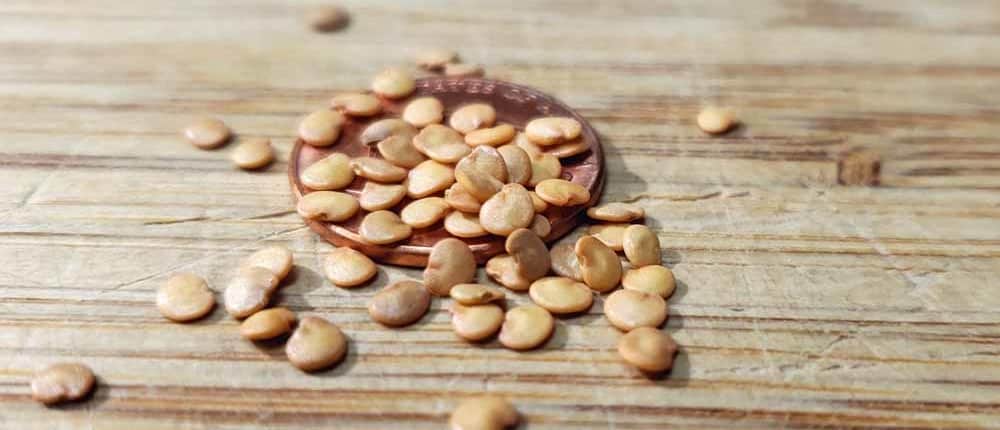
Site Needs
Eggplant is heat-loving, growing happiest in gardens with five months or more of warm to hot weather. Choose a sunny location where the sun can warm up the soil early. Raised beds and large black containers work wonders in colder climates to warm the soil sooner than in-ground gardens. Cool temperatures below 60°F reduce fruit production. In hot weather climates, afternoon shade can prevent leaf and fruit scalding, as fruit production decreases above 95°F.
Three to four plants will supply a steady stream of fresh delicately sweet fruit for a family, with extra for friends, neighbors, and co-workers.
Soil Needs
Like its tomato cousins, eggplant is a heavy feeder needing a rich, fertile soil to grow well and produce the best fruits. Adding well-aged compost into the bed the fall before planting provides nutrients all season. Fall cover crops improve the soil structure and fertility, as well as feeding the beneficial soil organisms doing the heavy work of transporting specific nutrients to the plant roots.
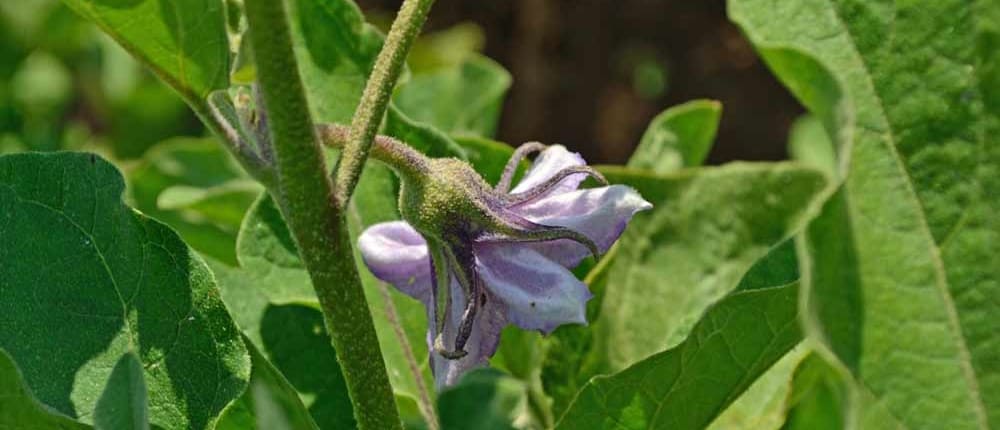
Planting
Soak the seeds overnight and plant in warm soil – ideally 80° to 85°F, but no less than 70°F – to greatly improve the germination rates. In warm soil, sprouts will appear in 7 to 12 days but can be delayed to three weeks or more in soil less than 70°F.
For almost all of North American gardeners, starting seeds indoors and transplanting them out after the soil warms up is the most successful method. Sow seeds indoors 6 to 8 weeks before your last expected frost date. Plant the seeds no deeper than twice their size in loose, moist soil then reduce the soil moisture to barely damp after the seedlings appear to reduce damping off and fungal issues. Transplant seedlings as needed into larger pots or containers to give the roots room to grow. Some gardeners will delay transplanting until a couple of weeks past last frost date to ensure bigger plants and earlier harvests, as well as avoiding early flea beetles.
Harden the young plants off by setting them outside on warmer days and bring them in the late afternoon, helping them become more robust and ready for transplanting into the garden. Transplant after the soil is warming up and not dropping below 60°F at night. Measure the soil temperature first thing in the morning to see what the minimum is.
Give the plants enough room to grow with good air circulation – eggplant doesn’t thrive in an intensively planted setting. 2 to 3 feet between plants is a good distance, allowing the sun to reduce molds and mildew while ripening the fruits faster and more evenly. Adding a bit of well-aged compost into the transplant hole helps feed the plants.
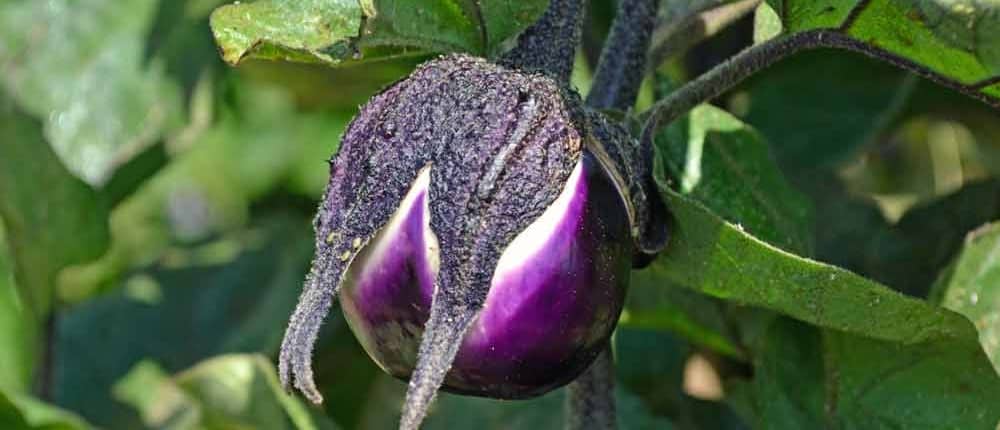
Growing
Eggplant has a shallow root system, so avoid cultivating too closely and pull or clip weeds carefully to not disturb their roots. Better yet, use a 2 to 3-inch layer of mulch for weed suppression that also insulates the roots and soil from excessive moisture loss while keeping them cool in hot weather.
Bigger yields come from starting the plants early and transplanting big, robust, healthy starts into warm soil in a sunny area. Keep them warm with moist roots and pest-free, otherwise, they can be set back and have a difficult time recovering. Producing lots of fruit requires lots of nutrition, so feeding a diluted liquid fish emulsion, milk & molasses snack, or other organic liquid fertilizer once a month will keep the plants in tip-top condition and health.
Companion Planting
Companion planting is an excellent weed and pest control technique. An early season crop of lettuce, French parsley, or spinach followed by herbs like French tarragon, thyme, or Mexican marigolds. Beans and peas provide needed nitrogen and shade in hotter climates. In cooler climates, make sure the beans or peas don’t shade out the sun-loving eggplant.
One word of warning on companion planting beans and Mexican marigold – they are antagonistic, so don’t plant both with eggplant, choose one or the other!
Other nearby companion plants to consider are beneficial insect flower mixes to bring in ladybugs, lacewings, and others to keep aphids under control.
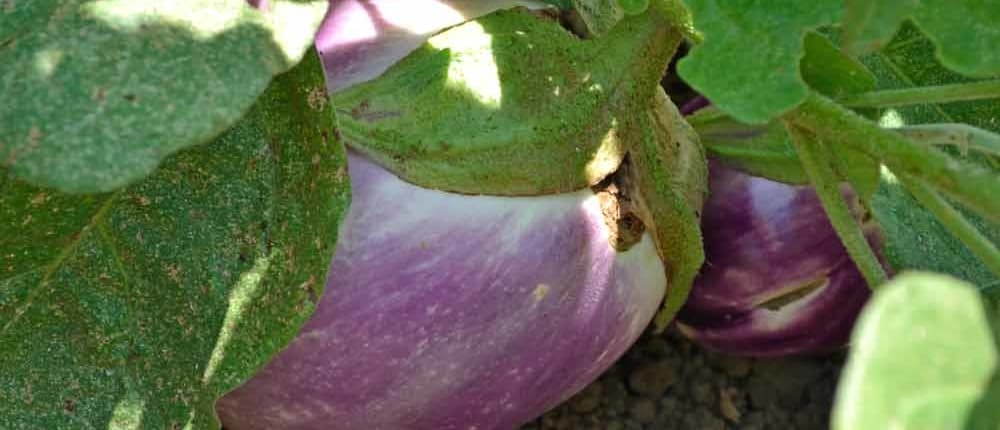
Pests and Diseases
Colorado potato beetles can be a threat, but growing a companion crop of bush beans will help repel them. Inspect the undersides of leaves for the tell-tale yellow egg masses and pick them and any adult bugs off immediately.
Tomato worms can appear, so pick them off as you would on tomato plants. Knock aphids and red spiders off with a blast of water from the garden hose.
Flea beetles are the largest threat and can riddle young plants with tiny holes seemingly overnight. Small round holes in the leaves and tiny insects that jump like fleas are signs of flea beetles. In extreme infestations, the plants can lose their leaves and die. Young transplants are most susceptible and early detection is the key to preventing extensive damage.
From our personal experience, you can have very riddled leaves on your eggplant and still produce fruits. Do not give up hope, try to rid the plant of the beetles and give a little extra nutrition.
Trap crops of mustard planted near the area are helpful, as is interplanting with Daikon radishes to repel the flea beetles. If there is a sudden infestation, floating row covers and yellow sticky traps will help control the adult population.
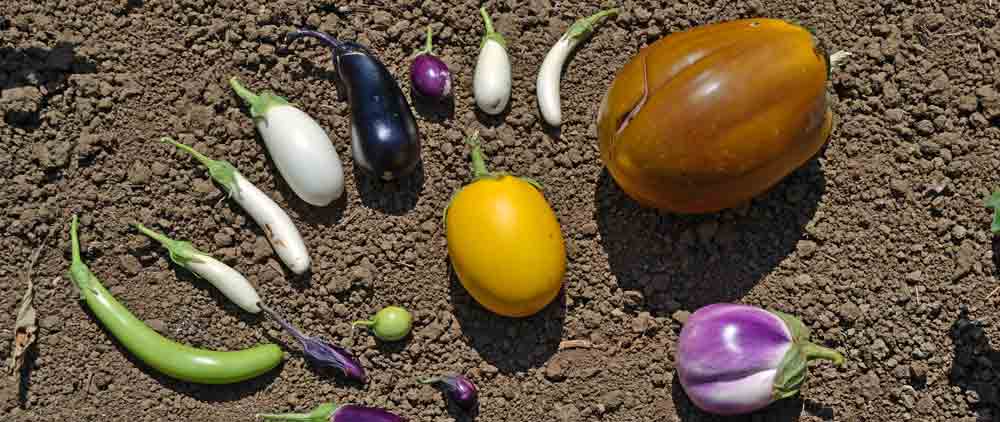
Harvest
Fully mature fruit has a shiny, smooth skin and firm texture. If the skin is dull, has any wrinkles, or is not firm to the touch – it is over-ripe or old and will be bitter.
When harvesting, cut the stems with a sharp knife or shears, don’t twist or pull them off as that damages both the fruit and plant. Handle carefully as they are delicate and bruise easily.
Harvest can start once the fruit is about one third mature size and still be tasty. This is a saving grace in the fall when frost threatens, just pick the young ones and have one last feast of baby eggplant!
Flavor is at its absolute peak just after harvest, but they can usually be stored a day or two in a cool place before starting to turn bitter.
Sicilian Eggplant and Tomato Sauce is an easy and simple but brilliantly delicious way to showcase your home-grown, fresh-picked garden bounty!
The Chile de Agua is a little known heirloom chile from Oaxaca, Mexico, grown in a small valley for at least three centuries and is slowly becoming better known and more popular in the US. It is one of the chile varieties grown in the ancient Milpa system of community gardening with companion planting using corn, beans, squash, amaranth, sunflowers and chile to feed and sustain the people in the community.
It is very much a local chile, until recently only grown in the valley of Oaxaca (wa-HA-ca) just north of the city of Oaxaca, Mexico. It is not grown commercially, so the production is relatively small and rarely makes it out of the surrounding area, explaining why so few people have gotten to know this remarkable chile.
Even though it isn’t well known outside of the area, the chile de agua holds a special place among other well-known chiles like the chile de arbol, serrano and jalapeño. Traditionally grown in semi-arid lands, it was planted when the seasonal rains began by transplanting seedlings into cone shaped beds made of adobe-like wet mud filled with leaf-cutter ant manure, then capped with more mud. The cap retained enough moisture in the soil for a few months if the weather didn’t cooperate, giving the village of Hidalgo Jaltepec fame for their yearly harvest of the chile de agua and their growing skills.
Chile de Agua roughly translates as “water chile” or “irrigated chile” and is grown almost year round now, selling for a large price premium in the open air markets of Oaxaca. They are sold in groups of six to twelve, fanned out in a circle on a small flat tray or large plate lined with a large green leaf. It isn’t uncommon to see the chile de agua selling for twice the price or more of any other chile at the market, selling out very quickly.
Characteristics
 They have a triangular, conical shape about 4 inches long and 1 to 1 1/2 inches wide at the shoulders, tapering to a pointed tip. The skin is shiny, smooth and slightly wavy with a moderately thick flesh. Almost all of the heat is located in the ribs which contain the seeds. The heat is moderated by sweet, almost herbal and slightly sour flavors overlaying the spiciness and giving the characteristic complex flavors. The chiles grow erect or pointing upwards and can be prolific in the right conditions. They have about the same heat as a jalapeño but with much more flavor, most often used fully ripe which is a medium-light green up to orange to moderate red in color.
They have a triangular, conical shape about 4 inches long and 1 to 1 1/2 inches wide at the shoulders, tapering to a pointed tip. The skin is shiny, smooth and slightly wavy with a moderately thick flesh. Almost all of the heat is located in the ribs which contain the seeds. The heat is moderated by sweet, almost herbal and slightly sour flavors overlaying the spiciness and giving the characteristic complex flavors. The chiles grow erect or pointing upwards and can be prolific in the right conditions. They have about the same heat as a jalapeño but with much more flavor, most often used fully ripe which is a medium-light green up to orange to moderate red in color.
The plants are bushy and mostly low growing, around 2 to 2 1/2 feet tall. The flowers are the usual white color, with a field of ripening chile de aguas a very colorful sight with the enormous numbers of chiles turning from a light spring green into yellows and oranges, finally finishing in a deep orange-reddish. They don’t all ripen at once, as the plant continues to set more flowers as the early season progresses, so the colors come in a palette of hues.
There has been some debate as to what is the “correct” form of the chile de agua, as there are some nurseries and seed companies selling seedlings and seeds with photos showing the chiles hanging down, or pendant. The physical form looks to be correct, but after researching the markets of Oaxaca and reading descriptions in current and historical literature, as well as chefs descriptions we concluded that the erect form is what has been known in Oaxaca for centuries and is the correct one.
Uses
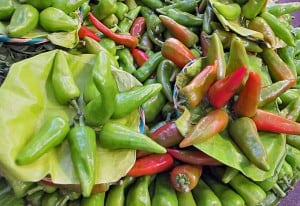 The fresh chiles are often fire-roasted, peeled and stuffed with a shredded meat and cheese filling; or cut into strips, sautéed with onions and epazote, then topped with fresh cheese and wrapped in warm tortillas. They are also commonly used freshly roasted in sauces, as well as being fully vine ripened and dried for a remarkably full-flavored powder, but less and less now as they are more valuable sold fresh in the market. Guajillo chiles have almost completely replaced the chile de agua as the main source of local dried chile powder, as they are more productive and less expensive in the market.
The fresh chiles are often fire-roasted, peeled and stuffed with a shredded meat and cheese filling; or cut into strips, sautéed with onions and epazote, then topped with fresh cheese and wrapped in warm tortillas. They are also commonly used freshly roasted in sauces, as well as being fully vine ripened and dried for a remarkably full-flavored powder, but less and less now as they are more valuable sold fresh in the market. Guajillo chiles have almost completely replaced the chile de agua as the main source of local dried chile powder, as they are more productive and less expensive in the market.
The Seed’s Journey
A search by a famous Chicago chef who specializes in authentic Oaxacan cuisine first introduced us to this unique chile. He needed the chile de agua for a special dish and couldn’t find the correct plants or seeds anywhere. One of our mentors who specializes on all things chile involved us in the search, as he thought we might be interested in finding an unknown but delicious chile to add to our offerings.
Through much searching and tapping into different networks, we came across a photographer working on a book about the restoration of the ancient milpa system just north of Oaxaca. This system has included the chile de agua for at least 300 years, as shown by Spanish documents, and most likely much longer.
The photographer obtained seeds from the local farmers, after email introductions and several explanations of why we were searching for this particular regional chile. There were initial concerns about our ethics and motives as farmers in the region had experienced theft of their seed sovereignty when corn they had grown and nurtured for centuries was obtained under false pretenses and later patented. After we explained our reasons for introducing the chile to American gardeners and restaurants, we were welcomed.
Evaluation and Grow-Out
 Once seed from Oaxaca was in hand, we sourced seed from four other sources as comparisons in our grow-out trials. A grow-out is an evaluation of a potential new variety to see if it is true to its description and type, as well as if it meets quality standards for growth, vigor, production and flavor before it will be included into our growers rotation for seed production. Sometimes the initial evaluation takes a few years to really determine if the potential variety has the quality and characteristics needed.
Once seed from Oaxaca was in hand, we sourced seed from four other sources as comparisons in our grow-out trials. A grow-out is an evaluation of a potential new variety to see if it is true to its description and type, as well as if it meets quality standards for growth, vigor, production and flavor before it will be included into our growers rotation for seed production. Sometimes the initial evaluation takes a few years to really determine if the potential variety has the quality and characteristics needed.
After evaluating all four seed sources we found that only the original seed from Oaxaca met all of the standards, so it was rotated into the seed production schedule of one of our most experienced growers. Two years had been spent on the evaluations and another two years were needed to produce enough seed to be able to offer it to our market. The first year, all of the seed from the best plants were saved and replanted with the seed from the second year’s crop being offered for sale after seed from the best plants were held back as our foundation seedstock.
The entire process took four years to complete – from obtaining the different seeds for evaluation to having enough seed to offer for sale. This amount of time to introduce a new seed variety isn’t unusual in our line of work, as the last thing we want to do is race off to market with a brand new seed that we don’t have any experience with or knowledge of.
The true value of our work is shown in the comments of gardeners who rave about the flavors, production and gratefulness in being able to grow a variety which has sustained and nurtured a culture across several centuries. In choosing to grow these ancient and sometimes rare seeds over the more common and easily obtained modern varieties, gardeners continue a tradition started long ago and experience a direct connection to the flavors that could easily have been lost to history.
The beautiful thing for home gardeners today is the ability to easily choose and grow a number of heirloom vegetable varieties with amazing stories, beautiful colors, bountiful production and delicious flavors! Each time someone chooses to grow one of these heirlooms, they keep a particular piece of history alive in a real, tangible way.
Maybe you, too, will choose to grow a delicious bit of history in your garden this year!
This article was first published in Mother Earth News Organic Gardening Blog on January 14, 2016!
September in northern Arizona means a few things – the weather starts to cool off and the nights become very enjoyable, the garden seems to find another gear as the energy-sapping heat begins dropping off and we harvest some of the most amazing colors and flavors of vegetables.
We’ve taken some glamour shots of the garden’s bounty and wanted to share them with you, along with tips on how we’ve enjoyed preparing them in different dishes.
Remember as you look at these vegetables to not worry if you can’t plant and taste these this year or season; see what appeals to you and either buy them now or add them to your Wishlist. Seeds are good for more than one year, so buying them a few months before planting will not have any impact on their germination next season. Just store them in a cool and dry place, then you can plant and experience all of these colors and flavors for yourself, straight from your garden!
Click on the links in the descriptions to visit them in our online seed store!
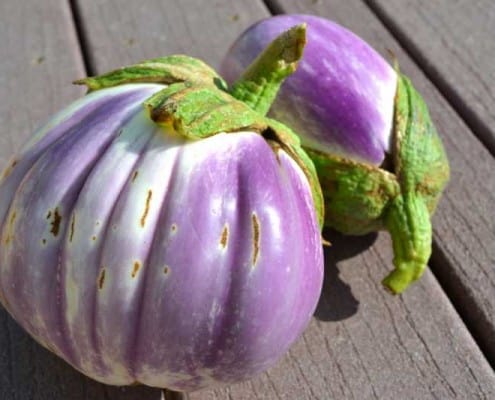
Fresh Rosa Bianca eggplant Рbeautiful, firm and tasty without any trace of bitterness. Eggplant can be quite delicious when grown in your own garden, harvested fresh and cooked soon after. We peeled and sliced this, slowly saut̩ed it in olive oil and added it into a fresh roasted tomato sauce. It easily stood with the intense roasted tomato flavors without getting lost or overwhelmed.
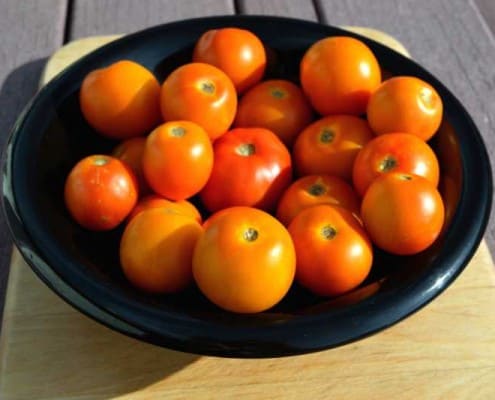
Flamme or Jaune Flamme Tomato – apricot size and color, French heirloom tomato that came on early and is still producing strong late into the season. Really a wonderfully delicious tomato with an immediate, intensely sweet flavor that is soon balanced by a smooth tartness and fruit overtones. The complex flavors last on the tongue, making a second and third bite inevitable.

Jubilee tomato – Absolutely delicious golden tomato with very little gel, lots of meat and long lasting flavor. Flavor is immediate with a balanced tart and sweet profile and very full. Many yellow tomatoes have a milder or blander taste, as if the flavors were diluted – not the Jubilee! Excellent fresh as a slicer and as a unique flavor in a fresh roasted pasta sauce – doesn’t get lost in rich red paste tomatoes and adds a brightness to the sauce.

Box Car Willie tomato – Most “old-fashioned” heirloom tomatoes have a strong to very strong acid content that contributes a tartness that sometimes becomes quite a bite. Not Box Car Willie – it has an immediate, forward flavor that starts off with a moderate tartness quickly followed by a mild sweetness, balancing the flavors out. Overall the impression is a slightly tart, yet mildly sweet smaller beefsteak tomato that is really enjoyable sliced fresh or juiced. When sliced it retained most of the juiciness inside the fruit and didn’t leak all over the cutting board.

Speckled Roman tomato – Meaty and moderately sweet with little juice or seed cavity, these are great on salads or as an appetizer dish where their unique and eye-catching colors can be shown off. Their flavors back up the show, making this all the more valuable in the garden. One of the all-purpose tomatoes that we turn to – it is excellent freshly sliced, in salsas and adds a fruit note to sauces or soups as well.
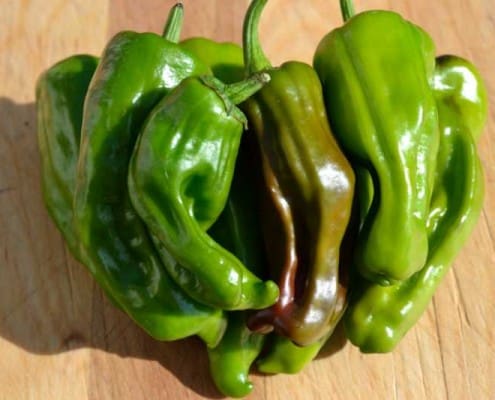
Pepperoncini Pepper – These are pretty common peppers, but the taste and flavors when grown at home are unlike anything you’ll find in the store. This probably explains why these continue to be a popular variety that continues to find new fans each year. Mild yet flavorful, these work well in many dishes that need a bit of pepper flavor without overbearing heat.
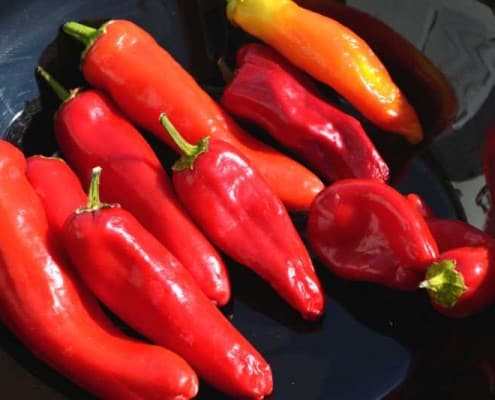
Hungarian Hot Wax Pepper – The wilder, spicier relative of the Sweet Wax pepper! Moderately warm without being overly hot with a tangy but slightly sweet flavor. Watered well, the heat is moderate but can be cranked up by restricting water. Excellent when de-seeded and dry-fried with garlic and onions on a hot cast iron pan, then added as a topping to a pizza.

Long revered in Oriental cultures as a symbol of mindfulness, calm and patience, the preying mantis is also a good sign in the garden as a pest patrol.
One of the wonderful things that we get to do in this business is visit seed growers. Most of the time the visit is to inspect the crops or harvest for that season, looking for potential challenges or quality issues that must be addressed. Open pollinated seed wants to “drift” or change and adapt to current conditions, and it is our job to keep true to the characteristics that made it so worthwhile to be passed down from generation to generation.
Other times we get to visit a grower or breeder to see what they are working on, which becomes a highly educational day in the fields for us. This is just such an occasion.
We were invited to south-eastern Arizona to spend the day with a world-class chile breeder. He currently supplies most of the chile seeds for the Hatch chile growers in New Mexico, and has been breeding and refining chiles for about 30 years. As an example, he obtained seeds for the “Sandia” chile from growers in the Albuquerque area almost 20 years ago and has doubled the production of that chile, while retaining it’s remarkable flavor and compact, bushy plant characteristics that have lots of leaf shade to prevent the young chiles from becoming sun scalded. He combines traditional plant breeding with extensive selection and very close observation, only choosing to keep the very best plants for seed.
We first met him at a Master Gardener conference where he presented a talk about the genetics of the breeding he was doing, explaining how much more complex a chile plant is than a tomato, with the resulting complexities in breeding and selecting to get certain characteristics to come through reliably. He has studied the DNA of the chile plant extensively, and has collaborated with university research projects working to identify and map the chile genome to better understand how and why it grows and reacts the way it does.
When we first pulled up to the growing field, we weren’t exactly sure what to expect. From our conversations with him, we knew he was growing several dozen chile varieties on a few hundred acres, but we didn’t know how. Chiles will readily cross pollinate, creating a mess for growers and especially breeders. As we parked, a tractor was already pulling a flatbed trailer out of the field loaded with freshly harvested chiles.
For all of the photos, click to see them full sized.
Looking out across the fields, you can see fluorescent flags in the middle distance. It is easier to see if you click on the photo for the full size. These are the primary plants that show all of the desirable characteristics or traits that the breeder is looking for, so they are tagged and will be allowed to fully ripen, then the seeds will be collected to be replanted next year. All of the surrounding chiles will be harvested for use as fresh green chiles.
This is where it all starts, with a single flower. One flower, successfully pollinated, will give you one chile with seeds. These particular chiles have a good amount of seeds, but there are some that we have grown for us that only produce a few seeds per chile pod, so they are much more labor intensive and more expensive to grow.
Chile flowers are classified as “perfect”, meaning that each flower has both male and female organs. The anther or male portion produces the pollen and is seen extending out from the flower in the above photo. The stigma is the female organ and it is beneath the flower petals and underneath the anthers.
Flowers begin appearing when the chile plant starts branching and the process of flowering is called “dichotomous”, meaning that the plant produces one flower, then two, then four, eight, sixteen and so on. There will be many, many more flowers than fruit, and a larger percentage of the early flowers produce fruit than those later in the season.
Chiles are surprisingly temperature sensitive, as they produce the most fruit when nighttime temperatures are between 65° and 80°F, almost stopping by 85°F and the pollen aborts when daytime temperatures are above 95°F. This is why home gardeners will shade their chile or pepper plants in the summer in hot locations. To read more about this, see Grow Better Peppers with Shade.
Gardeners with some experience often ask how we isolate the different varieties of tomatoes, peppers or any of the different cultivars we offer so they do not cross-pollinate. There are three main methods of isolation – time, distance and physical isolation. Our growers use all three of these techniques to grow more plants for seed, which increases production.
Swaths of corn are used at this location for isolation. It is planted earlier than the chiles in rows that are about 15 feet deep and seeded fairly thickly. The result is tall barriers that inhibits the travel of pollen from one plot of chiles to another and has proven itself to be highly effective through both field trials and laboratory testing.
When the corn has matured it is harvested and the stalks are removed, making it much easier to access the chile plots. By that time the chiles have flowered and produced the first couple of flushes of fruit which the seed will be saved from. Later pollination of fruit is picked and used as fresh chiles, with the seed not being saved.
We had camped in small secluded campground the night before, with a strong weather warning for the next couple of days due to a tropical storm working its way inland from the Pacific.
This is how we started our day, with clouds getting stronger and the wind picking up until the mountains to the west were getting drenched. The rains then turned toward us and we were forced out of the fields just after noon.
Keeping track of all of the individual plots is done both by hand and with modern technology. A hand drawn map is used in the field to verify and make notes, with the information being transferred to a computer file later.
There is a team that works to keep the quality high – the breeder and farm owner, a field foreman and two highly experienced plant identification specialists that spend lots of hours each day in the field with the foreman, looking at and evaluating each individual chile plant for the characteristics that are desired. Those plants are then identified, tagged and tracked throughout the season.
If a plant continues to perform to standards, the chiles will be harvested and the seeds saved for next season. If even one trait or characteristic is found to be below standards, the markers are removed and the fruit is harvested as fresh chile to be eaten and the seeds are not saved.
The field inspections of chiles was a highlight of our day! This chile is just starting to ripen past the green stage. There are sometimes 15 different characteristics that are desired and evaluated in a single chile – many not having to do with heat or taste.
If you click into the larger photo, you will see the thickness of the flesh better. This shows how fertile the soil is, as poor or unsuitable soil will not grow thick flesh and the skin will be slightly to noticeably bitter. The breeder has shown me photos of chiles that have a flesh 3/8 of an inch thick! This is extremely good soil for growing chiles.
This particular chile only grows two ribs down the center of the fruit where the seeds are attached to. They know to cut the chile open from the side to see into the chile for evaluation.
One thing we learned is that the capsaicin or heat is located along the ribs of the chile. Mild to moderate chiles will have the majority of the heat here. This is primarily true for most chiles, though some of the hotter varieties will contain additional capsaicin in the flesh.
Once again, clicking into the larger photo will show the yellow capsaicin better. It is located on the bottom rib and is a very light yellow color. It was very educational to taste the chile flesh, which was very flavorful and mild and then touch the rib with the capsaicin and taste it. The heat was immediate and surprising for such a mild chile and lasted for several minutes on the tongue. This is why many recipes will say to remove the ribs, as it strips out the majority of the heat!
The capsaicin can be easily seen on the top rib as a light yellow line that follows the flesh, with the tip of the knife pointing to a heavy spot. This chile has a good amount of capsaicin on both ribs and would give an unsuspecting person quite the surprise!
His focus with chiles is on the milder varieties, such as those grown in and around Hatch, NM.
We talked about different characteristics being selected for in the plots and here is a representation of some of them. At first glance, these four chiles seem to be all the same – large, green and fairly flat. In fact, these are all different cultivars; bred, selected and grown for different markets.
The top one is grown for fresh chile sales at Mexican markets – this is what traditional Mexican households are looking for in size and flavor for specific dishes with fresh green chile. It is too long for canning, as the chile will fold over in the can – making it undesirable for whole canned chile use.
The second from the top is grown for the canning companies – it has a “crown” where the stem is, making it easier to de-stem by machine. In fact, the term is called “de-stemability” when looking at the characteristics.
They will pick a chile, grab the stem and snap it off of the top. If it comes off whole without taking any of the chile with it, that is good. If part of the stem remains, or some of the chile is removed – that is not acceptable.
The third chile is preferred for fresh stuffing use as it is flat and wide and is perfect for Chile Rellenos.
The bottom one is perfect for fresh roasting, as it is rounder so that it will tumble in the flame roaster and is longer and wider than the canning chile. The stem is a bit smaller and tighter than the canning chile as well, which is desirable for roasting as you don’t want to lose the stems in the roaster.
It is easier to see some of the physical differences in this shot.
For the breeder, flavor is most important followed closely by productivity. We must have tasted a hundred chiles during our time in the field and left with both of our arms full of chiles that had been picked and tested for de-stemability or other physical traits and were then waste. We loved it!
Another look at the production capability of a chile plant. They select for smaller, more compact plants with larger chiles and lots of leaf cover to shade and protect the chiles from sun scald and hotter temperatures. More leaf cover also keeps the soil cooler which keeps the flowers cooler, maintaining a better pollination and fruit production environment.
It quickly became apparent that there were many other traits that had been identified and were selected for beyond just flavor and size or appearance of the chiles that contributed greatly to the overall quality and flavor of the chiles. Lower plants that had thicker stems so that the chiles didn’t break the stems from the high production and large sizes were part of it. More leaf cover with larger leaves was another. Tolerance and resistance to disease, sun-scald and other challenges were more traits actively encouraged.
Remember how we talked about isolation in a previous photo? Here’s another example of isolation that is being used to actively improve the chiles in the field. These are isolation cages or tunnels, put over the chile plants after they are sown to exclude any insects or pollen drift from other chile plants. This prevents cross-pollination and only allows the chiles inside the cage to do the pollination. These cages were just slightly taller than the chile plants and some were hundreds of feet long – as long as the row of chile plants.
Here’s another look, showing two different types of isolation in one photo. The remains of the corn row isolation between plots is next to one of the isolation tunnels, with the field manager and breeder as we saw them most of the day – heads down looking at chiles with their hands full of chiles. The yellow flags are tags of specific plants that have been identified as having the traits or characteristics they wanted.
The isolation tunnels don’t prevent sun or water from entering, only insects and stray pollen.
After we were chased out of the fields by the rains, we got a tour of the processing facility where the truckloads of ripe red chiles were cleaned, de-seeded and dried. The dried chile pods are sold to a company that makes chile paste and sauces, while the seeds are sold to the New Mexico chile canning companies and grown around Hatch, NM and surrounding areas.
We were treated to seeing how much seed is involved in an operation like this – lots and lots! The warehouse is climate controlled for temperature and humidity and is stacked full of chile seeds. Most will be sold to the commercial growers of fresh green chiles, but there is a deep store of multiple years worth of breeding stock seed. There are backups upon backups going several years back, all labelled and coded with details so that they can be easily reached if needed, or if there is a crop failure due to weather or insects.
This level of backup and redundancy is absolutely necessary as a breeder, as there is nowhere else to turn if a crop fails or things don’t turn out well. We felt very privileged to see and spend some time in the seed warehouse!
Heirloom Corn – More than just Sweet Corn
Heirloom corn is gaining in popularity as more people taste the vast differences and depths in flavors compared to commercially grown hybrid sweet corn. Comments like “It tastes more like corn than any store-bought corn I’ve ever had” and “The flavor lasts much longer and is much stronger than what I’m used to,” are common when people first taste roasted heirloom corn.
What many don’t realize is there is much more to discover in heirloom corn than just the sweet, fresh eating varieties. After all, corn has been the foundation of nutrition in Mexico and Central America, as well a surprising amount of North America.
William Woys Weaver does a marvelous job of introducing and explaining the different types of heirloom corn in his extensive book Heirloom Vegetable Gardening, the result of over 30 years of growing, tasting and cooking with heirloom vegetables.
Types of Corn
The Indians appear to have categorized their corns by intended use: for flour, for hominy and porridge, for popping, and so forth. Each corn had its adjunct ceremonies and festive recipes. We have inherited some of these corns from native peoples, and we have selectively borrowed some of their dialect names (such as flint) for types of corn, but we use them in much different ways. The profundity of the changes that occurred as the cultivation of corn shifted from the Indian to the white man is acutely evident in Porter A. Browne’s Essay on Indian Corn (1837), which cataloged thirty-five of the most commonly raised varieties at the time. Very few were pure Indian sorts, and only a couple are known today; the rest are probably extinct.
Browne organized his corns by color. Among the yellows he listed King Phillip Corn, which is still available. Under white corn, he mentioned Smith’s Early White and Mandan, in this case a sweet corn, not the Mandan corn familiar to seed savers today. His list of red corns was the largest, including Guinea Corn, William Cobbett’s Corn, Dutton Flint, and a curious Mexican corn “found in a mummy.” Perhaps the Mexican corn released in the 1860s by Massachusetts seedsman James J. H. Gregory attempted by virtue of its provocative name to cash in on a similar implied ancient authenticity, like the Anasazi bean of today.
Horticulturists divide corn differently than did either the Indians or the early corn specialists like Browne. All of the cultivated varieties belong to the same species and therefore readily cross with one another. In fact, corn is one of the easiest of all garden vegetables to cross, since it relies on windblown pollen for fertilization, and even the slightest puff of air can carry pollen a great distance. This promiscuity results in many varieties that fall between the five or six recognized types generally accepted by horticulturists. Of the garden varieties, these include popcorn (var. praecox), dent corn (var. indentata), flint corn (var. indurate), soft (flour) corn, and sweet corn (var. rugosa). If this discussion is shifted to Mexico, everything is turned topsy-turvy by the huge number of corns that evolved there. Their complicated pedigrees were analyzed in Paul Mangelsdorf’s Corn (1974), one of the breakthrough studies on the origins of this plant.
Popcorn is one of the oldest and hardiest of all the types and can be grown where many other corns do not thrive. It can be planted earlier in the spring than other varieties, but of course it will cross easily with any type of corn planted near it. Since popcorn pops best when the kernels are over a year old, this is a corn that must be allowed to ripen on the stalk, then properly dried indoors before storing in containers free of insects and moisture. Freezing it immediately before it is popped will increase the rate of popping. I have included two old varieties in my selection that not only pop beautifully but have a flavor not found in modern commercial varieties.
Dent corns are characterized by a dent or crease in the kernel, hence the Indian name “she-corn.” This type of corn is starchy and is generally used for roasting, corn bread, and hominy. It is a type best acclimated to the South and Southwest, where it seems to have developed the greatest number of varieties. Flint corns are the northern counterpart to this type. The kernels contain a high percentage of opaline, a mineral that gives the corn it’s gritty or “flinty” texture when ground. Flint corns are normally used for grits and hominy, as are many field corns.
Flour corns or soft corns are characterized by a kernel that is mostly starch when ripe, and therefore lends itself to grinding for flour. All North American Indians involved in agriculture maintained flour corns of one kind or another. Even though they are believed to have had a tropical origin, corns with this genetic feature were among the first to be dispersed by the Indians to all parts of our continent. The Tuscarora corn on my list is one of the classic Eastern corns of this type.
The Indians of North America distinguished between two types of sweet corn, the “green” or unripe corn of most corn types when they are in the so-called “milky” stage, and a corn with heavily wrinkled kernels that is naturally sweet by genotype. The sweet corn of white culture is this latter type. Historically, true sweet corn was a latecomer, reaching what is now the United States in the 1300s. It originated in Peru, where it is still used to make chicha, a fermented drink made in pre-Columbian times. Sweet corn derives its sweetness from a recessive gene, a mutation that has made it defective in converting sugar to starch. This characteristic was utilized by Native Americans for storing slow-ripening late-season varieties as “fresh” corn during part of the winter or for caramelizing the corn while in the husk over hot coals. This slow drying process resulted in a sweet-tasting dry corn that could be eaten as a snack or used in stews and vegetable mixtures.
According to anthropologist Helen Rountree (1990, 52), the Powhatans of Virginia made a corn-and-bean dish called pausarowmena that served as a staple dish during the winter. In the late summer, “green” corn or a variety of sweet corn was harvested and roasted in the husk over hot coals until dry and slightly caramelized, very much in taste and texture like the present-day dry sweet corn of the Pennsylvania Dutch. This dry sweet corn was stored in middens and reconstituted as needed with water. It was stewed with two types of beans, a large pole variety and a small bush bean. This combination of dried sweet corn and two distinct types of beans constituted the real “succotash” of the Powhatans and related peoples in the Middle Atlantic region.
Planting Corn
All open-pollinated heirloom corn must be planted differently from hybrids. For best results, plant the seed in blocks or squares 5 to 6 rows wide. John Brown, a farmer who lived on Lake Winnepesaukee in New Hampshire and who developed the variety known as King Philip Corn, noted in The Report of the Commissioner of Patents (1856, 175–76) that farmers in his region were still planting corn “the old way” in rows 4 feet apart in hills 3 feet from one another, four to six plants per hill. This method works well for heirloom varieties and will ensure good pollination with room between the hills for squash. Pole beans may be planted among the clumps of corn and allowed to climb up the stalks.
Among the Indians in the East, corn seed was generally treated in an herbal tea before it was planted. F. W. Waugh described some of these decoctions in Iroquois Foods and Food Preparation (1916, 18–20). After soaking in the tea, the corn was left wet in a basket so that it would sprout a little before planting. This treatment was thought to protect the corn, and may in fact have produced an odor to camouflage it from birds and insects. It had the additional benefit of separating viable seed from weak ones and avoiding seed that might otherwise rot in the ground.
From this, we hope you’ve gained a deeper appreciation for the extensive uses and different types of heirloom corn and are inspired to give one or two different types a try this season! Visit our online store to see some storied varieties of corn.
With watermelons, both size and flavor matter. Heirloom watermelons grown at home will give the absolute best flavor and taste, regardless of size.
Cucamelons can act as a perennial if you are lucky enough to live in a climate where they can produce tubers, or radish-like roots. The first year they will produce as normal by starting to fruit around July until the first frost stops them. As they start to slow down, search around in the soil by gently exposing some of their roots to see if they have produced tubers. They will be a white to off white color and look something like radishes. If you see them, you can store them in a protected area over the winter and replant them next spring for extra early and larger harvests of cucamelons!
To store them, gently lift them out of the soil and stored in very slightly moist compost or potting soil in a cool but frost-free area. Next spring, wake them up by transplanting into pots early to mid-April in moist compost or potting soil and place them in a well-lit, sunny room. Plant in the garden into warm soil after the last frost date. These second year plants will take off sooner, producing flowers and fruit much earlier, giving you a longer season and greatly increased harvest.
If you live in an area that doesn’t get much frost, then you can overwinter the roots in place by insulating with 6 – 8 inches of straw mulch and lightly moistening it. They will be able to survive temperatures down to freezing with this approach. To ensure that the roots are less likely to rot in the cool moist soil, make sure that there is plenty of sand in the soil to allow the excess moisture to drain away.
If desired, the roots can be gently uncovered and transplanted much like above after overwintering in place to increase your yearly harvest.
Grow Lettuce Longer Into the Warm Season
When lettuce is mentioned, many think of the standard iceberg lettuce found in supermarkets and restaurant salads. That is changing with the growth in popularity of the different types of lettuces from Romaine to head and leaf-type lettuces, mainly due to the flavors and colors that they offer from deep red to almost white and noticeably sweet to tangy and slightly bitter. Iceberg lettuce, originally bred as a hybrid, is now offered as an open pollinated variety and has been around long enough to be considered by some as an “heirloom”!
We have come to expect lettuce year-round, mainly due to being educated by the supermarkets as to what our vegetables should look like, taste like and when they should be available. Many are surprised to find that lettuce is a cool season crop and will bolt or go to seed readily during late spring and summer months. It is best planted early in spring and then again in late summer or early fall when the temperatures start to cool off.
Ideal Conditions for Lettuce Seed Germination
Lettuce seeds won’t sprout when soil temperatures are above 80°F but they will start to germinate as low as 40°F, making it ideal for early and late season planting. A plant hormone is produced under warm conditions that stop the germination process, called “thermo-inhibition”. This is a carryover from wild lettuce that originated in the Mediterranean Middle East, where summers are hot with little moisture. If the lettuce seeds were to sprout under these conditions, they would soon die out and the species would go extinct.
Thanks to traditional plant breeding and selection of heat tolerant characteristics over a number of years, there are several varieties of lettuce that are more heat tolerant and are open-pollinated – meaning you can save seeds from year to year. Some examples are Saint Anne’s Slow Bolting, Summertime, Black Seeded Simpson and Jericho. Just because these are heat tolerant doesn’t mean that they will grow through the summer, only that they won’t bolt or turn bitter quite as quickly.
Thanks to ongoing research on lettuce traits, there are some techniques to extend the sprouting for lettuce seeds into the warmer months that home gardeners can use. The optimum soil temperature for most lettuce seeds is 68°F, with some varieties sprouting in the 40 – 75°F range. The temperature of the soil must be taken, not just the air temperature which can be several degrees different.
Sprouting Lettuce Seed in Warm Weather
In warmer temperatures, imbibing or soaking the seeds in water for at least 16 hours before planting in a well-lit area will increase the germination percentages greatly. Red light has been found to be the best color, but many home gardeners won’t have access to a non-heating red light and sunlight or full-spectrum light was found to be almost as good. Soaking the seeds in the dark in warmer conditions decreased their germination rates. Another technique that has shown to be successful is to soak the seeds in cool water in a well-lit area for 16 – 24 hours. This approach has increased the germination rate up to 97% when planted in warmer conditions. Soaking for less than 16 hours has little to no positive effect on germination. For a closer look at what happens when a seed goes through germination, read our article “Starting Seeds at Home – a Deeper Look”.
Other successful methods of extending the season for lettuce in the garden include laying a thick mulch of straw or wood chips on the ground of at least 1 1/2 to 2 inches. This insulates the soil from becoming too hot and drying out too fast and helps to preserve moisture in the soil. Shading the lettuce plants can give enough of a temperature drop to keep them from bolting, sometimes up to 3 – 5 weeks. Shade can be from a shade cloth on a row cover or hoop type structure or companion planting of tall wide leafed plants such as some types of pumpkin.
The traditional rule of thumb of “plant early and plant often” for lettuce can also be said as “plant late and plant often”, but some of the more heat tolerant varieties, along with soaking in the light and providing some mulch and shade can greatly extend your lettuce season in the garden this year.
After Ellen’s article about “Alternative Spinach Greens” she now tells us more about the original spinach. Grown in the cooler season in a rich soil, spinach is delicious – juicy with a nice crunch to it; a mildly sweet flavor and no bitterness. Sort of like a bolder leaf lettuce.
There is little written about the history of spinach. It is a common sight in the grocery stores and at farmers markets. In most areas it is hard to find spinach year round at market, because its season is so short lived, just 6 weeks or so.
Spinach seed germinates best in soils that are 40- 70 degrees F and prefers cool days and nights. At 40 degrees F it may take spinach two-three weeks to germinate, but most seeds will sprout. Whereas waiting for warmer soil temps to plant spinach one will see a decrease in germination and faster emergence of seedlings.
Spinach does well from March through May and again September through November. Spring plantings should be planted 6 weeks before the last frost in moist, nitrogen-rich soils. Consistent watering will produce a long harvest and the best looking leaves. When temperatures get warmer, watering twice a day and the cooling effects of shade cloth will help prolong harvest. Spinach’s season is short and perhaps that played into its status as the first vegetable to be frozen for commercial use.
Fall plantings also do well and will regrow in the spring, providing a few extra and welcome harvests early in the spring when everything is just getting started.
There are two types of leaves on spinach. Smoothed leaf spinach produces an oblong, dark to light green leaf. Savoy-types have slightly crinkled leaves with thicker dark green leaves. Regardless of what kind of spinach you grow, spinach is a well-loved vegetable.
The vegetable was probably bred from Spinacia tetranda, a wild edible green found in Nepal. In 647 AD spinach was taken from Nepal to China where it was referred to as the “Persian green.” Spinach was introduced by the Moors of North Africa to Spain in the 11th century. By the Middle Ages, spinach was grown and sold throughout the rest of Europe, and in England was known as the “Spanish vegetable.” It was not until the 1400’s that spinach became a staple in Mediteranean cooking.
Catherine de Medici, Italian royalty of the 1500’s, preferred spinach over other greens. When she left her home in Florence to marry into the French royal family she brought cooks with her to prepare her favorite spinach dishes. Dishes that are served with a bed of spinach are known as “a la Florentine” in her honor.
Breeding work with spinach began in earnest in the early part of the 20th century when breeders started selecting and hybridizing spinach varieties with disease resistance and those that are slower to bolt. One of the best-known varieties came from that period: ‘Bloomsdale Long Standing,’ a slow-bolting, savoyed spinach that is popular today.
Peppers Like a Little Shade
Sweet peppers and hot chiles are an important part of almost everyone’s garden, though in different ratios for many! Some really enjoy an abundant late summer and fall harvest of sweet bell peppers while others look forward to the hot chile harvest for months ahead.
One of the main concerns with growing peppers or chiles is the drop off in both quality and production during the height of the summer heat. As the long, hot days of summer set in production drops while diseases increase such as blossom end-rot and sunscald. There are some surprisingly simple approaches that can make a big difference in this year’s harvest of your beloved sweet peppers and hot chiles!
Three Techniques to Boost Pepper Production
Mulching is one of the very first techniques that has been demonstrated as beneficial to both quality and quantity. Combined with a drip system on a timer, large improvements to the health and vitality of the plants can be seen quickly. These two factors improve the stability of the soil moisture levels, moderating the peaks and valleys from wet to dry. This reduces the stress levels on the plants as they are able to access water on a continuous basis. The mulch insulates the soil and top levels of roots from drying out too quickly and often brings the moisture level up to the surface of the soil, instead of a couple of inches down. Another benefit to mulching with at least an inch of straw type mulch is the temperature insulation of the soil. Reducing the heat gain in the upper levels of the soil improves the plant’s amount and quality of production.
Shading of the pepper plants was recently examined with experiments done in Mexico, Spain and Israel as well as by the University of Georgia. They studied different shade cloth levels impacts on pepper production from 2008 to 2010 with four different levels of shade alongside no shade as the standard. They measured the air temperatures and the soil temperatures and correlated these changes to improved or reduced quality and quantity of peppers. The amount of peppers lost to rejection for quality reasons were closely examined.
What the study has shown is a moderate amount of shade, such as a 30% shade cloth, is the ideal. More shade didn’t produce better peppers past the 30% shading. In fact, as more shade was applied, the plants grew more but produced less peppers with more defects that caused them to be rejected. The moderate shading reduced the heat stresses by lowering the air and root zone soil temperatures, while decreasing diseases such as sunscald and blossom end-rot.
Works for Tomatoes as Well
It is interesting for us to note that these exact same approaches have proven to be the key to successfully growing tomatoes through the hot summers in Phoenix and Tucson, where daytime highs can reach 110 – 115°F! The use of raised beds, drip systems on timers, thick straw mulching and shade cloth allows the pollen to be under the critical 90°F for enough of the day to continue producing tomatoes.
If you have had problems in the past with peppers, chiles or tomatoes slowing production and having disease issues with the onset of hot weather, try these growing tips to get you back on track!
Are they called peppers or chiles, and why? I prefer to call them chiles and here’s my reasoning: In the Aztec’s Nahuatl native language, the word is “chilli”, which was changed to “chile” by the Spanish who were looking for a new source of black pepper and discovered these fiery little treasures. For me, chile is closer to the original name and meaning.
One of the mainstays of the garden, they are often started from seed or bought and planted right along with their travelling companions from the central Americas, the tomatoes. Humans have been eating chiles for at least 7,200 years, from archaeological evidence in Mexico and have grown them for around 6,100 years. For those that aren’t chile-heads, these sweet or hot little packets of history can be either boring or scary. Some gardeners will plant the same variety of green bell pepper year after year and not think too much of what else is on offer, while others are very concerned with the amount of “fire” some hot chiles pack. There is a lot of room to explore the world of chiles without being either bored or burned.
Chiles can be grown with great success in many varied garden climates across America. They are very adaptable to different conditions and have travelled widely, establishing themselves in many different locations and cuisines around the world. With a background understanding that they are a tropical plant originating in Central America and the following growing tips as a guide, you can have the tastiest, most colorful and most productive chiles or peppers from your garden this year. Here are some tips to help you along the way!
- Start seeds indoors at least 8 weeks before the last frost date. This can change year to year; they can be started a bit later in a hard winter and earlier during a mild one. A soil temperature of 75 – 85F will give the best germination. They are not nearly as fast to germinate as tomatoes, and will take from 14 – 21 days to germinate at the optimum temperature. Use heat mats under the seedling tray if needed. For a more in-depth look at what seeds need for germination, read Starting Seeds at Home – a Deeper Look.
- Peppers dislike transplanting or disturbance of their roots. Paper pots, yogurt cups or similar are a good start, having a large enough soil volume to give the root system enough time and space to develop well before going into a larger pot or into the garden. They can be started in seedling trays, but plant extra to account for those lost to transplant shock.
- Peppers really need warm soil to transplant into and warm weather for best growth and ripening. Full sun is preferred, but a light shade for part of the day should be all right.
- Make sure the weather is warm and all danger of frost has passed before transplanting into the garden. Daytime temps of 65F and night-time of 55F are minimums. If you find that you have to transplant under less than ideal situations, use what’s called “hot caps” or “cloches” at night to keep the termperature a few degrees warmer. These range from plastic milk jugs with the bottoms cut out to glass bells made for the purpose. Another alternative is to create a temporary row cover over the new transplants, taking it off in the morning and covering them at night. Use this until the night-time temperatures are warm enough for the young plants.
- Don’t worry about waiting an extra week or even two before setting the plants out, it will be worth it if you don’t lose half your peppers to a late-season frost!
- Peppers aren’t particularly picky about the type of soil, preferring a sandy loam of moderately high fertility. They will grow well in other types of soil, however.
- Critical factors are temperature and water, both factors need to be fairly steady. Don’t transplant starts from a warm growing condition into a cold soil, or let them dry out. They can tolerate high temperatures, but need a moist soil for best flavors and production.
- Days to maturity usually refers to the time from transplanting to harvest, similar to tomatoes.
- Magnesium is an important mineral, so add a dusting of Epsom salts to the hole when transplanting, working it into the soil around the plant.
- Transplant the peppers about 15 – 18 inches apart for best growth and to avoid crowding. This also makes it easier to see the ripe fruit.
- Separate sweet and hot varieties as far apart as practical, with neither upwind of the other if possible to avoid cross-pollination. If this is unavoidable, put the sweets upwind of the hots, unless you want really hot sweets!
- A 2 inch thick dressing of well-rotted compost around the base of the plant acts as both a mulch to keep the moisture levels more constant and act as a slow release fertilizer. For more on how to create great compost, read Compost- Nourishing Your Garden Soil.
- During the growing season, your peppers will benefit from feedings of a natural fertilizer, especially during the height of pepper production. You can make some of the best fertilizer yourself with our recipe for the Best Homemade Fish Emulsion.
- Green peppers will keep a bit longer than fully ripe yellow or red ones.
- Riper ones have more flavor and nutrients, are usually sweeter and have a more complex flavor. They also have much more Vitamin C. Hot varieties will have much more flavor with usually less apparent heat.
- Harvest when you think the fruit is ripe – either green, yellow or red. Try some of each color to see what you like the best. When picking fruit, don’t pull them off the plant, use a sharp knife or scissors to prevent damage to the plant, slowing growth and inviting pests and diseases.
- Companion plants are Basil, Carrot, Mint, Nasturtium, Spinach, Sweet corn and Tansy.
Use these tips for a great season of chiles or peppers, however you want to call them! Let us know how yours do this year, and if you have experiences or tips listed that would help others, please share them!
San Marzano tomatoes are world-famous with a long and storied history as the absolute best plum tomato for sauce and pizza. They are also excellent for canning, peeling and drying. Chefs worldwide prefer this variety to all others for making their signature sauces, and it is the only tomato that is acceptable for making true Neapolitan pizza. Many Americans are becoming fans and learning why this tomato created the peeled and sauce industry in Italy and across Europe.
San Marzano tomatoes are named for where they originate, the Campania region of southern Italy above the “toe” of the “boot”. Valle del Sarno is the valley where the recognized and protected variety is grown. The reason for this strict preference is the soil – a rich volcanic soil from Mount Vesuvius – that gives the tomato its distinct richness and depth of flavor. In fact, they are the only tomato that can be used for a true, recognized Neapolitan pizza! People who have tasted the native tomatoes grown in the volcanic soils claim that they can tell the difference between tomatoes grown there and those grown elsewhere, even if it is similar soils.
San Marzano tomatoes are thinner with a pointier end than Roma tomatoes, with a noticeably richer and mildly sweeter flavor. It has a thinner skin with fewer seeds and a meatier flesh than the Roma, with a higher pectin content that produces the thicker sauces it is famous for. This famous variety was developed from traditional breeding of three Italian tomatoes in the late 1800s; the King Umberto, Fiaschella and the Fiascona. Only the King Umberto tomato is still grown!
San Marzano tomatoes have been commercially popular since around 1875 when the first cannery was built to pack and ship these jewels across Italy and Europe. The popularity of the San Marzano declined during the 1970s as hybrids gained popularity for their thicker skins and tolerance of machine harvesting and marketability, but saw a resurgence in the late 1990s as people realized the flavor that had been lost with the original. Of 27 cultivars being grown in the Valle del Sarno area in the early 1990s, only 2 were selected as being the most representative of the traditional San Marzano. In 1996 the European Union granted Protected Designation of Origin status to the San Marzano tomato.
The San Marzano Redorta is one of the more popular cultivars of San Marzano due to its larger size and prolific production. The name creates some confusion, as this tomato comes from the Tuscany region, which is north of Campania where the tomato originated. It is supposedly named for a mountain – Pizzo Redorta – in the Lombardy region near the Italian Alps, which is much further north still. So, a larger version of the treasured San Marzano that is from Tuscany and not Campania, yet named for a mountain that is almost the length of Italy away? Stranger things have happened!
We do know that it is a great tasting and producing tomato with all of the traditional characteristics that have made the San Marzano tomatoes famous and have brought it back to being a heavyweight in the sauce tomato world. Whether you grow the traditional San Marzano or the Redorta, the flavors and production are sure to win you over.
Heirloom tomatoes vs standard supermarket “red slicing” tomatoes
One has created a following based solely on its incredible flavor, the other has long been the benchmark of mediocre, tasteless, pithy but brightly colored tomatoes. Available 365 days a year, it’s only offering to the salad or sandwich is a bit of bright red. Why do these universally yucky tomatoes exist, and why do the supermarkets continue to sell such an obviously inferior product?
Consumer demand is the main reason, as most commercial growers state that they are only paid on the weight, not the flavor, of their tomatoes. This traces back to the tomato breeders, as they are responding to the grower’s inputs of what they need – a plant that will yield as much as possible over as long of a time as possible. The fruits must withstand being harvested, packed, and stored in a warehouse where they are turned orange with ethylene gas, then shipped by truck several states away and continue to look good a minimum of 7 – 10 days later when displayed on the grocery store shelves. If the grower has no financial incentive to produce flavor, they won’t.
Here’s a new wrinkle to the story. The growers are not completely at fault, it turns out. Recent research published in the journal Science isolates a gene mutation that is responsible for the almost artificially bright red, at the cost of flavor. This gene mutation was accidentally discovered by commercial tomato breeders and then bred into the majority of tomatoes used in supplying the food chain, especially in the off-season. This is not a genetically modified organism (or GMO) as the gene mutation happened spontaneously, and not through mechanical gene manipulation.
This is truly a story of unintended consequences, as it clearly shows the unwanted results of focusing and breeding too closely on one desired characteristic while ignoring others. The color mutation also turns off the ripening sequence gene, which disables the tomatoes’ ability to manufacture sugar in the body of the fruit, explaining why the lack of flavor. Dr. Ann Powell, a lead author in the Science paper offered this solution to the flavor issue – heirloom tomatoes, as they do not have the genetic mutation!
Flavor Is the Price of Tomatoes’ Scarlet Hue, Geneticists Say
Sweet Corn Planting Tips
May is the traditional month to plant heirloom corn. A direct-sow crop, it must not be planted too early as it needs warm soil. Continuing with our historical heirloom history series, below is an excerpt on Sweet Corn from the 1884 “How The Farm Pays – The Experiences of Forty Years of Successful Farming and Gardening” by William Crozier and Peter Henderson.
Sweet Corn
“It may seem presumption in me to instruct the farmer how to grow corn; but as their methods of growing this special variety of corn for table use are probably not as well known as for the field varieties, I will here give them.
All the varieties of sweet corn may either be sown in rows four and one-half feet apart and about six or eight inches between seeds, or planted in hills at distances of three or four feet each way, according to the variety of corn or richness of the soil.
The smaller and earlier varieties as the Tom Thumb and Early Minnesota, may be planted in hills two feet apart each way. The taller variety of the richer the soil, the greater should be the distance apart. Such later varieties as Egyptian and Evergreen require to be planted at least three feet apart, or even more, on very rich soil.
We make our first plantings in this latitude about the middle of May, and continue successive plantings every two weeks until the last week in July. In more southern latitudes, or in warm, light soils at the north, planting is begun a month earlier and continued a month later.
I have repeatedly sold it in the New York markets, realizing as high as $200 per acre, and this, too, at the first wholesale price, the consumer paying about twice as much. An ordinary yield is about 11,000 ears to an acre. In such cases, however, it was either an early crop or a very late one, bringing two or three dollars per 100 ears, while the intervening crops, which came in competition with the full market, often sold as low as seventy-five cents per 100 ears.
The importance, then, will be seen, of striking the market at such seasons when the article will be scarce. The quantity of seed required per acre is from six to eight quarts.”
Modern Day Thoughts and Comparisons
It is very interesting how much attention was paid to the “richness” of the soil. Also, some great pointers to think about if you are trying to bring corn to the local market.
Here are some thought-provoking yield comparisons to our modern corn production. The average yield for commercial hybrid corn in 2010 was 152 bushels per acre. In 2010 the average price of corn was between $3.50- $4.00 per bushel. A bushel of corn in ears is 70lbs.
Higher production yields have not actually produced more income for the farmer in 128 years, due to several factors! Inflation is one of the biggest, but commodity pricing structures are a close second.
Just for comparison, that $200/acre in 1884 would be worth about $4800/acre in 2010. This means that even with the increased yields of the hybrid corn, 152 bushels/acre at $4.00/bushel is only $608/acre, which is eight times less! Even if the income was $100/acre in 1884, that would be about $2400/acre in 2010- something that many farmers would jump at.
Plant some heirloom open-pollinated corn in your garden this year. OP corn may not have as high of production yield as the modern day super sweet hybrids but it sure does have a richness and depth of flavor that can’t be forgotten.
A Few Tips to be Successful with Corn
- End wormy corn- We have heard about this tip from many folks, as an old time remedy to the corn worm. After the silks turn brown, apply 20 drops of mineral oil to the tips of each ear. Repeat every other day for three weeks. This not only smother s the larvae but also makes husking a simpler task.
- There is a lot of folk lore about corn. Here are a few to ponder.
- “Put one fish head in each hill like the Indians did.”
- “Plant the seeds when the oak leaves are the size of a squirrel’s ear.”
- “Corn should be knee high by the Fourth of July.”
- If you are just growing a small plot in might be better to plant in a block than in rows.
- Corn has a number of four-legged enemies, raccoons, squirrels, rabbits and deer. Fencing maybe needed to protect young stalks depending on your area.
- Remember there is more than just sweet corn, visit our heirloom corn department for all the choices available.
Here’s a few recipes to tempt your tastebuds!
Fresh Roasted Garden Salsa
Cajun Chicken Maque Choux
Heirloom Corn and Potato Chowder
Hortopita is a savory pie that is stuffed with horta, or edible wild greens such as dandelions, chard, kale, and lamb’s quarters- commonly called spring greens. Horta directly translates as “grass” in Greek, but refers to about 80 different greens growing all over the country. It’s delicious alone (sauteed with lemon and olive oil) but obviously much more savory when feta and filo pastry sheets are used. Hortopita is a cousin of Spanakopita–layers of crispy filo dough stuffed with cheesy, leafy spinach greens.
Here are two separate, distinct recipes for you to try. The first one comes directly from Greece, just outside of Athens and is a modern take on a traditional family recipe used for many years. The second one is from FarmPlate, a wonderful website that connects folks looking for great, locally produced food with those folks that make just such foods. They are “a revolutionary online community that connects farmers, fishermen, foragers, food artisans, restaurants, markets, distributors and foodies everywhere. Our searchable directory of 40,000+ business listings across the country, networking tools and reviews make it fun and easy to find and enjoy real foods near you.”
These are large recipes, as they are usually made daily at the local bakery in large sheets, to be sectioned out for individual portions. Make a large batch, as it will be gone in a couple of days!
Traditional Greek Hortopita
- 2-3 spring onions, chopped
- 1/2 Cup extra virgin olive oil
- 2 lb of various wild or spring greens, chopped (spinach, kale, arugula, sorrel, Swiss chard, fennel, leeks – only the white part – and any other spring green you like)
- 1 package country style filo dough
- 2-3 eggs whisked together
- 4 oz feta cheese
- Salt and ground pepper
- Preheat oven to 350 F.
- In a big pan heat olive oil and saute the onions till they are tender.
- Add the greens stirring continuously till they are wilted, about 4-6 minutes.
- Remove from the heat, add the egg, feta cheese and ground pepper. Careful with the salt since feta cheese is already salty!
- Evenly spread 1 Tbs olive oil in a baking pan, then set the filo dough and spread the mixture on it. Cover with the other filo, carefully close the edges and score the surface slightly (the steam from the cooking of the mixture needs to escape).
- Spread water and some olive oil on the surface and bake for 1-1/2 hour in the lower position of the oven till the filo takes on a golden color. Remove and let set up for about 15 minutes before slicing and serving.
Makes 3 to 4 servings
Hortopita from FarmPlate
- 1/2 cup uncooked white rice
- 4 tablespoons extra virgin olive oil
- 4 small or 2 large leeks, rinsed well and thinly sliced
- 2 tablespoons currants
- 1 teaspoon ouzo, or 1 tablespoon balsamic vinegar or white wine
- 2 tablespoons chopped fresh parsley
- 1/4 teaspoon dried oregano
- 1/4 teaspoon dried thyme
- 1/4 teaspoon salt
- Very generous grinding of black pepper
- 3 pounds assorted tender greens, such as baby spinach, arugula, beet greens or Swiss chard, stemmed and washed
- 1 teaspoon grated lemon zest
- 3 tablespoons butter
- 1 package filo dough, thawed
- 8 ounces feta cheese
- Pinch of grated nutmeg
- Preheat oven to 400 F.
- Cook rice by adding rice to small pot and covering with 1 cup water. Turn heat on high and bring water to gentle boil. Stir rice well, turn heat down to medium-low. When water level drops to top of rice, stir once more, cover with lid and reduce heat to very low. Rice will be done in 5-7 minutes.
- While the rice is cooking, heat 2 tablespoons of the olive oil in a large skillet over medium heat. Add the leeks and fennel, sauteing until they begin to soften, about 5 minutes.
- Stir in the currants then add the ouzo, vinegar or wine and cook for a few seconds to evaporate.
- Stir in the parsley, oregano, thyme, salt and a generous grinding of pepper. Transfer the leek/fennel mixture to a bowl and set aside.
- Return the skillet to the heat. Add two big handfuls of greens and cook, stirring, until they wilt. Transfer to a colander. Wilt the remaining greens in the same manner. Squeeze the excess liquid from the greens then coarsely chop. Sprinkle with the lemon zest and some pepper.
- Melt the butter and stir in the remaining 2 tablespoons olive oil. Lightly brush the inside of a 12-inch tart pan with a little of the oil/butter mixture.
- Unfold the filo dough and cover loosely with a kitchen towel to prevent it from drying out.
- Place 1 sheet of dough in the pan, pushing it into the corners. There will be about 3 inches of overhang. Brush the dough lightly with butter/oil. Add another filo sheet, placing it at a 45º angle to the first sheet. Brush that one as well. Continue stacking (at an angle) and brushing the sheets until you have used 8 sheets to line the pan.
- Spread the rice in the pie bottom. Top with the leek mixture followed by the greens. Crumble the feta and sprinkle oil on top. Season with black pepper and a grating of nutmeg.
- Top with 8 of the remaining filo sheets, stacking and brushing them as you did the bottom layer. Trim the overhang to 2 inches beyond the rim of the tart pan.
- Roll the edges inward, tucking them under. Brush the top with more butter/oil. Score the top into serving pieces using a very sharp knife.
- Bake for 15 minutes. Lower the heat to 350ºF and bake for 45 minutes longer. Let rest about 15 minutes before slicing and serving.
Makes 6 to 10 servings
Recipe Tip! The feta cheese is naturally salty, so be careful how much salt you add during preparation.
The yearly gardening season is just about on us and for many gardeners that means a heavy focus on tomatoes. Specifically, heirloom tomatoes, as their meteoric rise in popularity over the past few years would have many a pop and rock star green with jealous envy. The heirloom tomato seems to be almost everywhere these days, from high end cooking shows with their ultra-close-ups and glamor shots to many new cookbooks focusing on home-grown and locally sourced produce to Farmer’s markets, CSA’s and almost everyone’s home garden. Even die hard hybrid “Better Boy” and “Early Girl” gardeners that have planted nothing else for years are giving these wondrous beauties a shot.
With all of this attention being paid to the “Love Apple” as it was known in Colonial times, we wanted to give you a better chance of harvesting all of that potentially rich, complex, juicy tomatoey goodness that are only seedlings at this point.
Tomatoes are complex creatures, needing rich and well mineralized soil that is well drained and not over-watered. The simple, ruinous yet well intentioned act of giving tomatoes too much water most likely accounts for fully 75% of all of the problems with them; from soil borne fungi and other micro-organisms attacking the roots to fruit splitting, cracking and blossom end rot and ultimately the worst- flavor wash-out. Ideally, tomatoes like a lightly moist soil. The best way to judge when to water is by getting to know your plants and paying attention to the leaves. When the leaves just start to curl at the very edges or tips is when the plant is telling you it’s thirsty. Different varieties of tomatoes will have naturally curling leaves, thus the need to get to know your specific plants. Give them a drink, but don’t drown them. There has been multiple studies done that have clearly shown that tomatoes do much better with a little less water than a little more. Production, taste and disease resistance all increase when the plant is watered a full 25% less than what is commonly believed to be the “right” amount.
Now that we have the biggest issue out of the way, let’s look at some other techniques to get the best out of this year’s tomatoes! This is not an exhaustive, encyclopedic resource. There are many, many books available that are devoted entirely to the subject of fixing your tomatoes. What we want to do is give you some good, proven and easily used tools to help you get the best out of your tomatoes this year. Some of the most effective remedies are the simple and easily applied ones, as they are the ones that get used more often. So here we go!
-If you see brown or black soft spots appearing at the blossom end (opposite the stem) of the tomatoes, you have blossom end rot. This is caused by a lack of available calcium and can be easily corrected. Tuck a Tums or other antacid tablet or two into the base of the roots and give them a little water to soften. The antacids are calcium carbonate and will quickly provide needed calcium to the plant. It won’t cure the existing blossom end rot- nothing can- but will prevent the next set of blossoms from having then same problems.
-A 10 – 20% milk solution used as a foliar spray is highly effective against mildews and tomato mosaic virus. This remedy was discovered by Wagner Bettiol, an agronomist from Brazil found that weekly sprays of a milk solution was faster and more effective than synthetic chemical fungicides. The milk solution controlled the fungi just as well, with the added benefit that it acted as a foliar fertilizer and boosted the plant’s immune system and production. This spray also works for zucchini, cucumbers and other cucurbits including melons. It seems to work on roses also!
1 Cup milk
9 Cups water
Mix well and spray on offending mildews, blights and assorted unwanted fungi.
-The baking soda/mineral oil approach has been around a long time and is familiar to long-time gardeners, but it bears sharing. Cornell University has research showing the effectiveness of this approach. The baking soda deters fungus spores, and the oil coats the leaves, holding the baking soda in place longer.
1 Tbs Canola or mineral oil
1 Tsp baking soda
1 Gal water
Mix well and spray directly on the fungal blights.
– To stop nematodes from attacking the roots of your tomato, insert old 1 to 5 gallon nursery pots that have been cleaned, disinfected and had the bottoms cut out into the soil leaving 2-3 inches showing. Transplant your tomatoes into these guards. For heirloom tomatoes, the larger the pots the better, as the root system can be extensive.
-Another preventative measure for blight and other diseases, sprinkle a handful of this mix into the planting hole before you insert the transplant.
3 Cups well aged compost or potting soil
1/2 Cup powdered milk
1/2 Cup Epsom salts
1 Tbs baking soda
Mix well and sprinkle a handful into each planting hole.
-For soft-bodied insects, the milk spray described above is very effective, as well as a simple home-made insecticidal soap spray. You must use soap and not a detergent. They are different in how they work. Soap will kill the bugs, detergent will often kill the bugs and your plants! You’ve been warned. One of the absolute best soaps out there is Dr. Bronner’s. You can get it in a liquid form, it is certified organic and won’t harm your plants.
1 Tsp liquid soap
1 Qt water
Mix well and spray on the unwanted critters.
-When the plants are really working setting flowers and fruit, use the Spring Garden Soil Elixir recipe and omit the Borax and cranberry juice. Mix as usual and give a light spray to the roots as a side dressing to give the tomatoes a boost in nutrients to keep the health and flavor up.
These techniques and tips will set you on the path of better, tastier and longer producing tomatoes this season. If you have an especially effective remedy or recipe that you’ve used to help your tomatoes do well, please share it with us!
Heirloom Peas Have a Long History
Heirloom peas or garden peas originated in middle Asia, from northwest India through Afghanistan and adjacent areas. A second area of development lies in the Near East, and a third includes the plateau and mountains of Ethiopia. In these areas wild field peas have been found, along with many cultivated forms of P. sativum, but wild P. sativum has never been found. Vast areas in southern Russia and southern Europe still have large tracts of field peas growing wild. The garden pea was an early introduction in northern Europe and Asia and as far west as England and east as far as China.
Early heirloom peas were cultivated for their dry seed, similar to today’s “split peas” for soup. The varieties known a thousand years ago had seeds that were much smaller, dark colored from the modern garden peas. They were an ideal supplement to an early hunter gatherer lifestyle that was just beginning to transition into agriculture. They were durable, easily carried and their germination lasted for several years. They needed only a short season to produce food for both man and animals and flourish in soils too poor for early cereal grains which were being adapted to early agriculture at about the same time. No doubt that during times of scarcity of animals to hunt, peas became a chief source of protein.
Primitive garden peas have been found during excavations beneath houses of the Swiss lake dwellers around Morssedorf, Switzerland dating back to both the Bronze and Stone Age. Peas also were found in a Hungarian cave dwelling, believed to date back even further. Charles Pickering says in his 1879 Chronological History of Plants, “Of culinary vegetables, Pisum sativum the only kind that can with certainty be traced as far back as the Stone Age;…” He also mentions a type of Fava bean, parsnips and carrots found in the excavation.
Garden peas have been found in the excavations of ancient Troy. The Aryans from the East are thought to have introduced peas to the Greeks and Romans, who grew them in ancient times. Theophrastus, considered by many to be the Father of Botany, described peas in detail and their cultivation in his Enquiry into Plants in Chapter 8 which is devoted to cereals and peas. He is the author of the oldest existing treatise on botany, having died in 287 BC. U. P. Hedrick wrote about Theophrastus in his 1928 book The Vegetables of New York, “He wrote at a time when gardening, farming, orcharding, and the cultivation of flowers and medicinal plants were far advanced, when all food plants derived from the Old World had been named, domesticated, had their varieties and had been cultivated for many centuries. He was writing in a advanced stage of agriculture and civilization; quotes other books about plants and had much of his information from predecessors whom he looked upon as ancient as we look upon him as belonging to an age long, long ago.”
Heirloom peas were one of the most widely grown vegetables of northern Europe during the Middle ages, as their description and cultivation was evident in almost every early gardening or agricultural book of any language in middle and northern Europe. They were almost as widely grown as the early cereals as an easily produced storehouse of nutrition for the population and for food for the armies of the time. In 1066 they were one of the chief crops grown in England, and by 1400 peas were frequently mentioned in the “Expenses of Collegiate and Monastic Houses”. From the 1400s to the mid 1600s, peas were so commonly eaten that “pottage” and “porridge” were terms meaning peas as well as the dishes made from them. Sugar peas were common and described in John Worlidge’s Systema Horticulture, or the Art of Gardening in 1677.
Eating freshly shelled peas, or what were called green peas became a very popular delicacy with the aristocracy after the restoration of Charles II when they were parched, fried or boiled. Louis XIV was highly fond of them, and so was his entire Royal court. In a letter written by Madame de Maintenon dated 10 May 1696, she describes, “The subject of Peas, continues to absorb all others, the anxiety to eat them, the pleasure of having eaten them, and the desire to eat them again, are the three great matters which have been discussed by our Princes for four days past. …It is both a fashion and a madness.” Commoners didn’t partake of “green peas” until the early 18th Century.
Heirloom peas were introduced very early on by European explorers, possibly starting with Columbus himself on his 2nd voyage. It seems they were widely traded and spread rapidly. In 1535 Cartier mentions the natives of Hochelaga (now Montreal) growing peas, and in 1613 French traders obtained peas grown by the Ottowa River by the native tribes. Francisco Vasquéz de Coronado mentions “small white peas” in New Mexico in 1540. In 1614 peas were a food staple of the New England native tribes.
Subsequently, American gardeners have embraced heirloom peas wholeheartedly with many breeders improving yields, flavor and pod size. We have a nice selection in our Heirloom Pea Department for you to enjoy!
Raising backyard chickens is becoming increasingly popular, no matter where you live. There have always been rural chickens, but now there are small and large city chickens, happily living in coops and backyards all across the country. Chickens can do a lot for you, both in the garden and in the kitchen. First off, they give you a real measure of food security and increase your resiliency. The eggs are a great bartering tool, as very few folks that we’ve talked to weren’t interested in some fresh home-raised eggs. Chickens are great for bug control, light soil tilling and fertilization. The chicken manure is very high in Nitrogen and is a great addition to your compost. Home raised eggs are some of the highest nutritional content of any chickens, including free-range. The reason is that most home raised chickens are pampered and given extra nutrition and care. It is very easy to provide a highly nutritious and healthy diet for your backyard chickens from your home garden. We will look at several heirloom vegetables, herbs and flowers that you can easily grow in your garden that will not only provide some tasty treats for your chickens, but give you some great greens as well.
Almost any of the greens and vegetables that you enjoy your chickens will love. You have probably seen them get really excited if you share salad fixings or old veggies from your refrigerator. Think of how they will get when they know that the garden is providing treats for them all of the time! You don’t have to plant a special garden just for the chickens, as they will happily devour any greens that come their way.
The question is often asked of why grow your chicken’s food, why not just buy the 50lb. bag of chicken scratch and call it good? There is nothing wrong with going this route, and realistically you will most likely need to have some commercial feed available as your garden may or may not produce enough greens and grains for your flock. This will vary depending on the size of your garden compared to the size of your flock. The real answer to growing fresh greens for your chickens is the same answer as to why you would want to grow your own garden- taste, nutrition and choice.
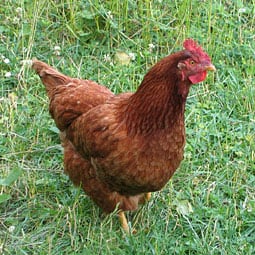
Spring Chicken
Let’s look at several varieties of vegetables and herbs that are easily grown in a home garden setting that will provide some tasty and highly nutritious greens for both you and your birds. Starting off in the cooler season with some cold-hardy greens will help jump-start the hens energy levels. Kale, Swiss Chard, mustard greens and beet tops are a great start to the season. They all like a cooler soil, sprout quickly and will provide some serious nutrition. Speaking of sprouting, sprouts are an absolute powerhouse of nutrition and are ready to eat in 4-7 days. Alfalfa sprouts are possibly the best known, but there are several different types of sprouts such as radish, mung bean and red clover that work well. Sprouts take up minimal space, use little water and need only the most basic equipment to produce a couple of pounds of fresh food. This is a technique that works especially well in the depths of winter when other greens are scarce and expensive. You can produce plenty of sprouts for yourself and a half dozen chickens from a half gallon jar with a sprouting screen lid on your kitchen sink.
Once the weather starts warming up more options open up for different vegetables and greens. Cabbage, chicory, mustards, spinach and a number of greens do well in the early spring once the soil has started warming up. These include Miner’s Lettuce, French Purslane and Aztec Red Spinach. Once the true spinach starts to bolt in the warmer weather, switch to the spinach substitutes such as red and green malabar spinach, the Aztec Red spinach and New Zealand spinach. All of these love the heat, won’t bolt and produce all through the hotter weather. Traditional winter cover crops such as alfalfa, clover, vetch and annual rye should be considered for later in the year.
If you have the space, pumpkins and squash- both summer and winter- can be excellent feed choices. Winter squash and pumpkins that can be stored until later in the winter give you an additional resource for high quality feed when nothing else is growing. Corn is another great choice, space permitting, as it is the base for the commercial feeds. Other grains that will grow well in a smaller home garden set up is Mennonite Sorghum, Amaranth and Quinoa. Don’t forget Sunflowers, as they can provide both shade and a wind break for your garden along with seeds for your girls.
Many folks don’t think of herbs when it comes to providing food for chickens, but there are some great choices here. Borage is one such, as it has lots of mineral-rich leaves as well as flowers that are edible and make excellent additions to a chicken’s diet. Comfrey is in the Borage family and is another great choice.
To help you get started, we have created a section on our website called “Backyard Chickens Collection”, appropriately enough. We list all of the varieties that are mentioned in this article to save you the time of looking throughout the website to find them. It is really easy to incorporate the chicken feed aspect into your existing gardening plan. Planting one or two extra plants of each variety for each half dozen chickens is usually sufficient, with grains such as Amaranth and sunflowers going almost exclusively to the chickens. As with most things gardening related, a little experimentation will prove the way as you see what volumes of fresh garden produce you particular flock of chickens needs.
I’ve often wondered why the Armenian Cucumber was always the preferred choice of cucumber for my grandmother. She said it was the best tasting cucumber and that it was “burpless” which was important to her. I know sometimes folks are very sensitive to eating raw cucumber because of that burping issue.
What causes the burping? Some foods are more prone to producing gas, such as onions, celery, and cucumbers. Foods high in fiber have more of the “gas” forming characteristics which can cause that burping issue. But back to the Armenian Cucumber, which is really a melon (Cucumis melo var. flexuosus) is why we don’t burp. There is a funny group of melons that botanically are melons but are much similar in characteristic to the cucumber (Cucumis sativus).
I wanted to know more about this Armenian Cucumber, so I referred again to Fearing Burr’s Field and Garden Vegetables of America to read up on the Snake or Serpent Cucumber (AKA Armenian Cucumber).
Though generally considered as a species of cucumber, this plant should properly be classed with melons. In its manner of growth, foliage, flowering, and in the odor and taste of the ripened fruit, it strongly resembles the muskmelon. The fruit is slender and flexuous; frequently measuring more than three feet in length; and is often gracefully coiled or folded in a serpent-like form. The fruit is sometimes pickled in the manner of the Common Cucumber, but is seldom served at table sliced in its crude state. It is generally cultivated on account of its serpent-like form, rather than for its value as an esculent (edible). Well-grown specimens are quite attractive; and, as curious vegetable productions, contribute to the interest and variety of horticultural exhibitions.
Interesting that in 1865 not much was mentioned about the “burpless” quality that the Armenian Cucumber is known for today. I would have to say it is much tastier than just an ornamental for the local county fair!
Give this recipe a try with your Armenian Cucumbers!
Peasant Salad
- 2 tomatoes cut in wedges
- 2 cucumbers, sliced
- 1 small red onion, sliced
- ½ c olive oil
- ½ c red wine vinegar
- 1 Tbsp lemon juice
- Dried oregano, to taste
- Salt and ground black pepper, to taste
- ½ c Kalamata olives, chopped
- ½ c crumbled feta cheese or chopped anchovy fillets (optional)
- Combine tomatoes, cucumbers and onions in bowl.
- Whisk olive oil with vinegar, lemon juice, oregano, salt and pepper. Add to vegetables; toss to coat. Top with olives.
- If desired, add feta or anchovies.
Makes 4 servings
Recipe Tip! Redmond Salt is the best tasting salt to use with fresh garden vegetables. A sprinkle on a fresh cut tomato or on a hard-boiled egg is heaven.
Discover the captivating history of Savoy perfection cabbage. Learn about its origins and why it’s considered the best in the world.

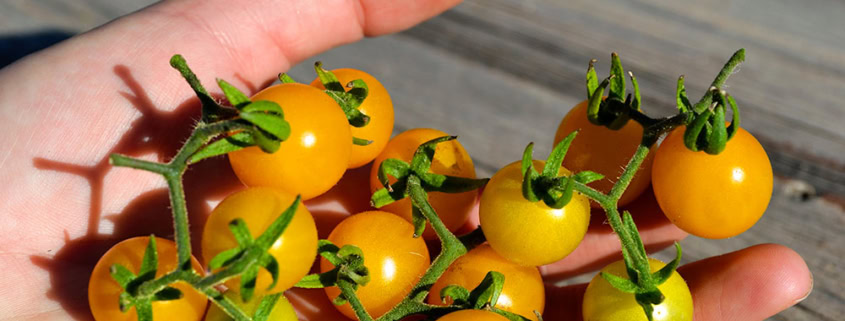
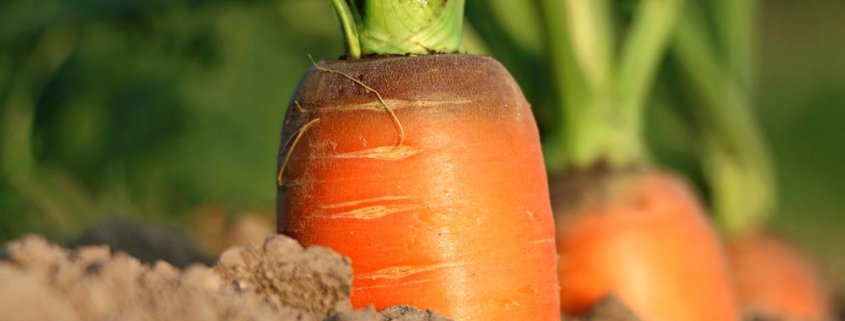
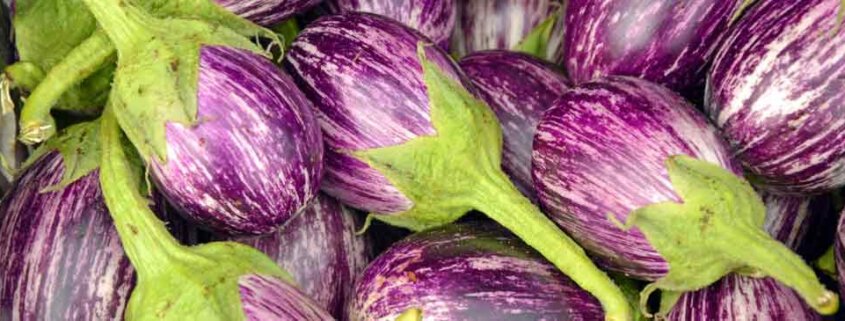 2019 Terroir Seeds | Underwood Gardens
2019 Terroir Seeds | Underwood Gardens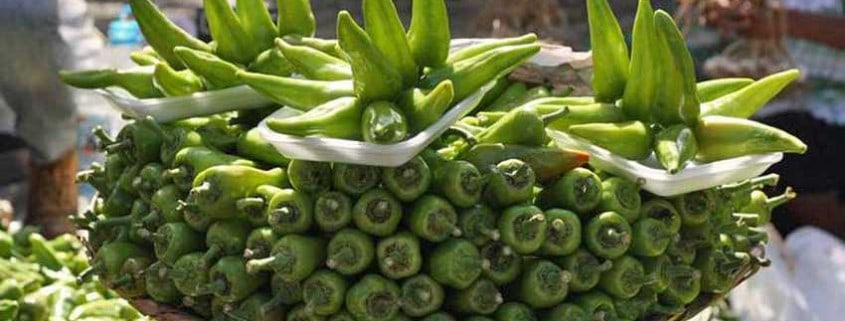
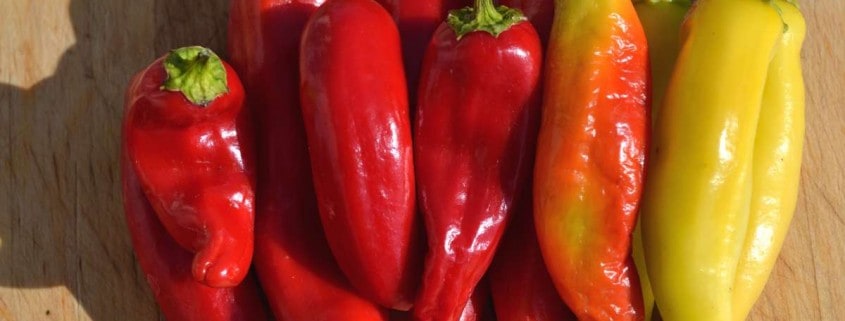
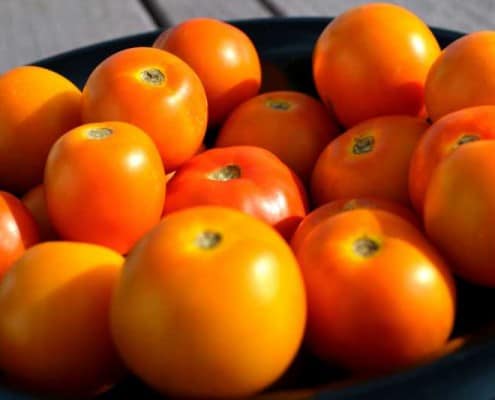
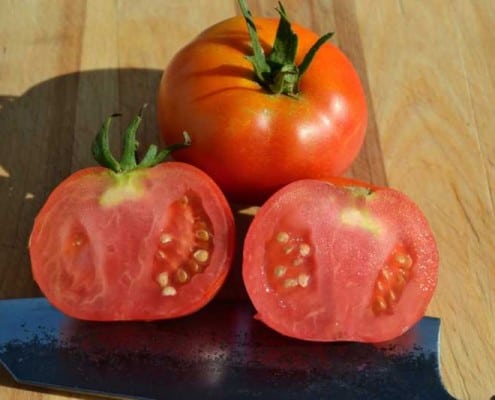

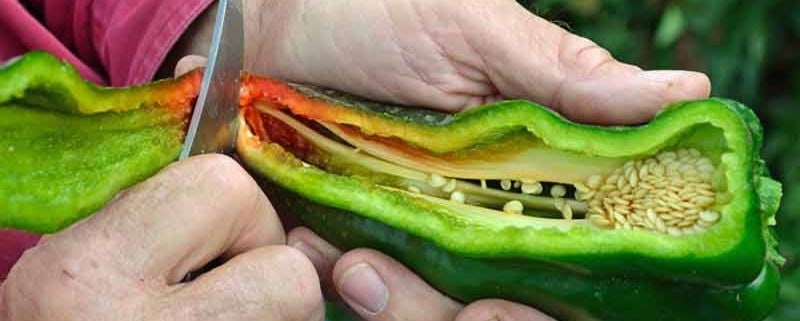





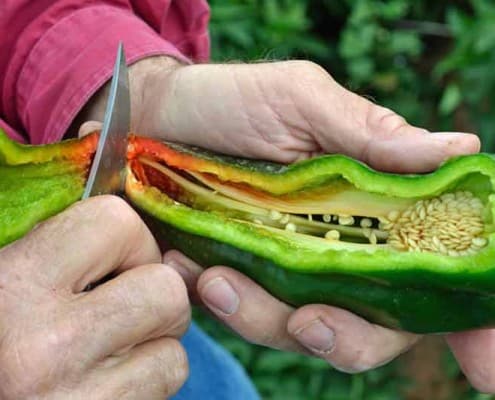
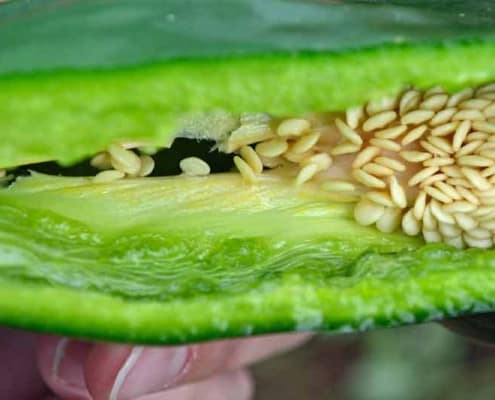



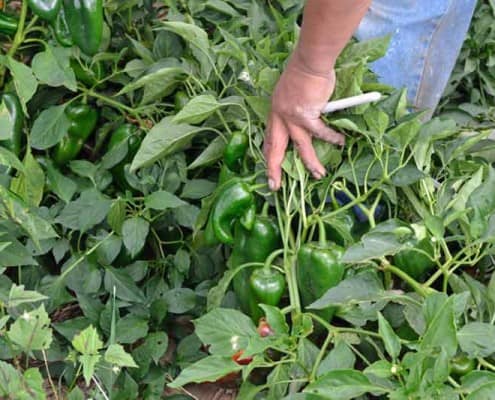

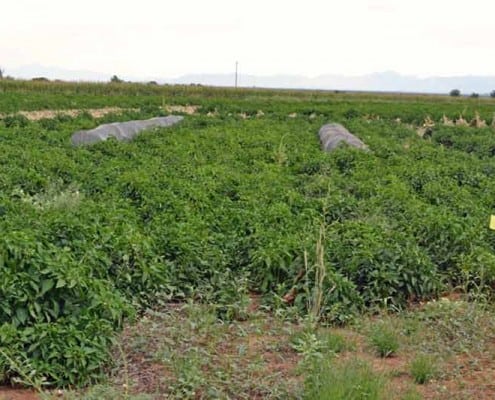
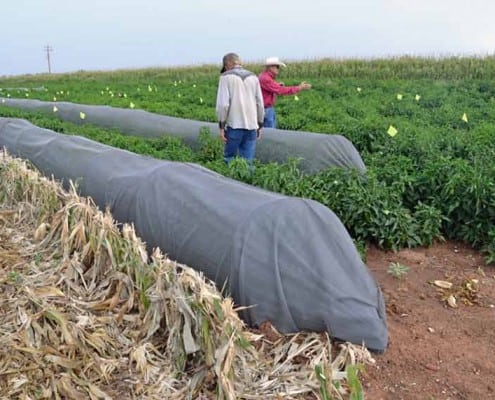
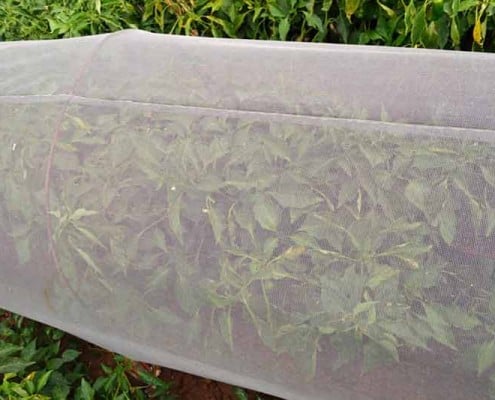

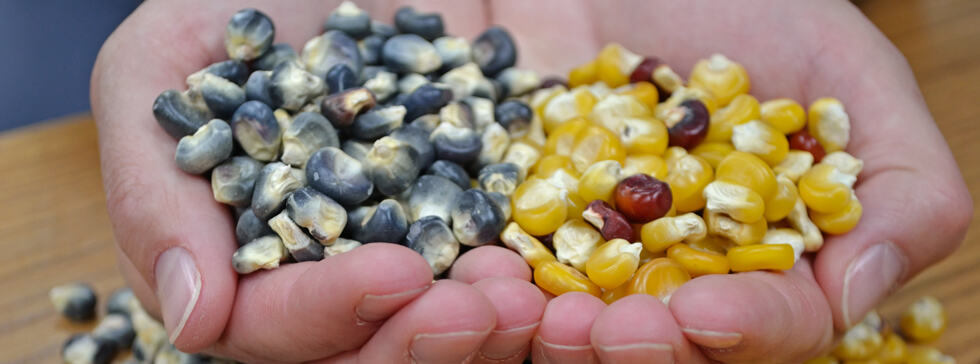
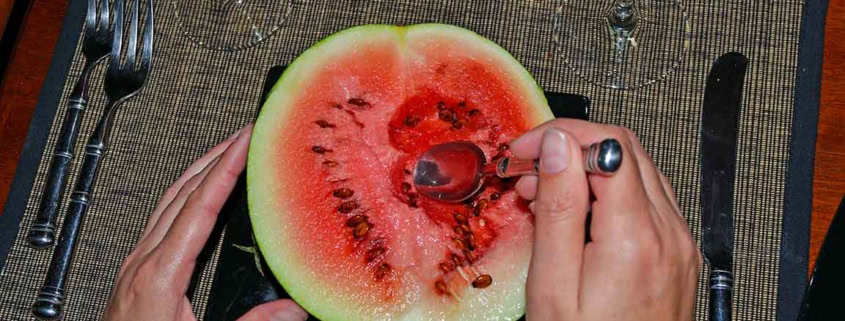 © 2024 Terroir Seeds | Underwood Gardens
© 2024 Terroir Seeds | Underwood Gardens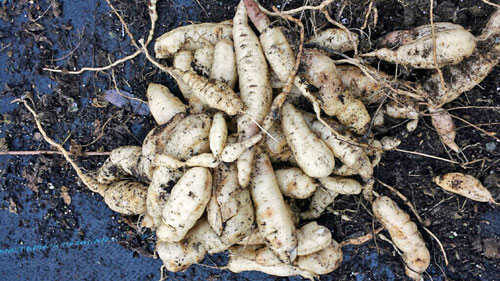
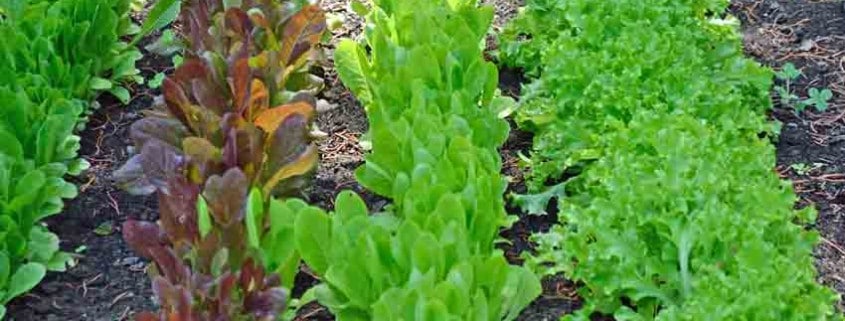
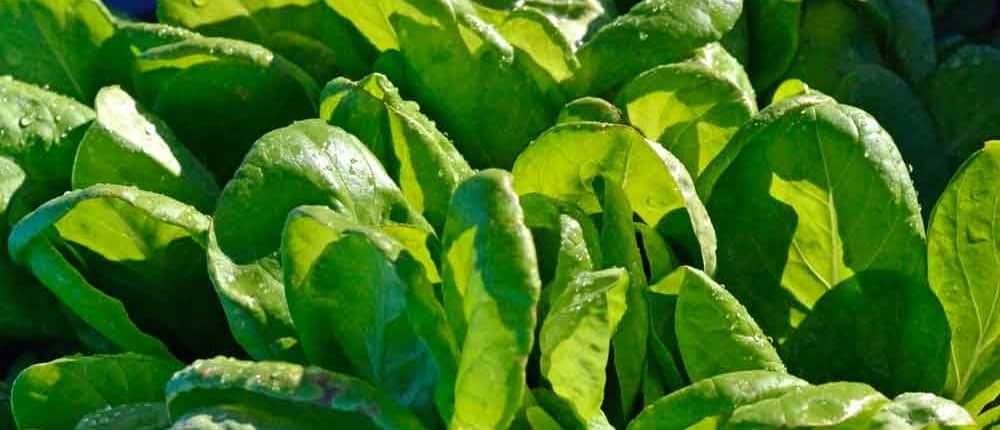
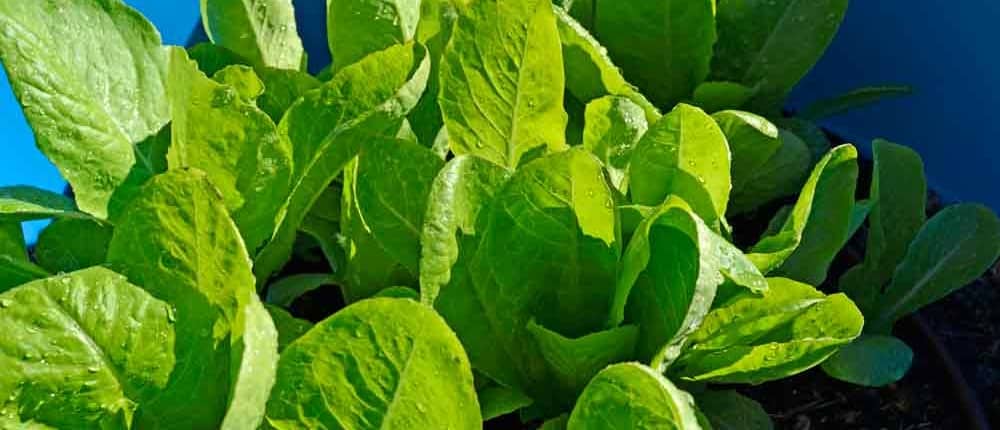
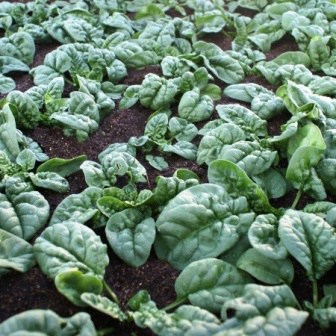
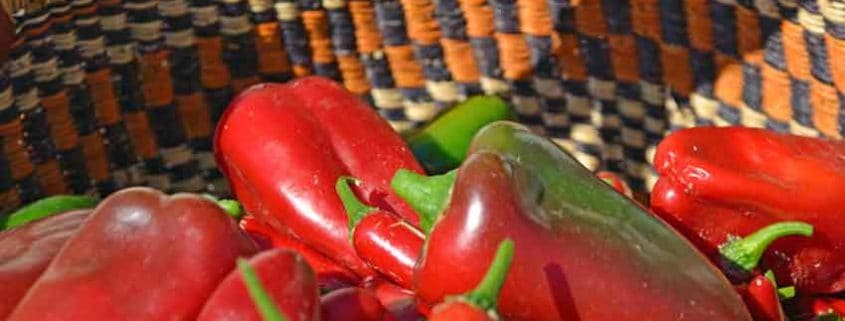
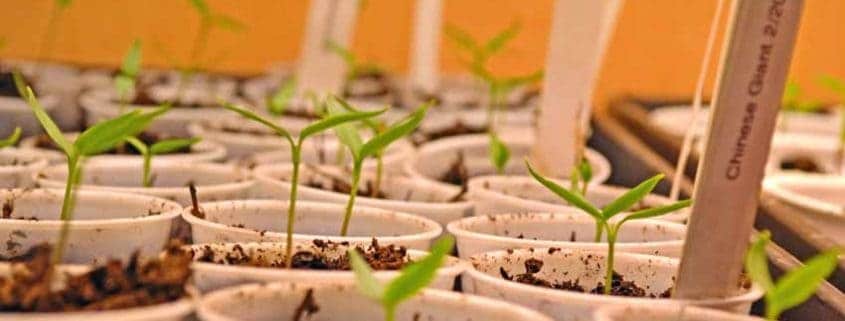

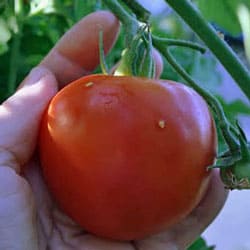
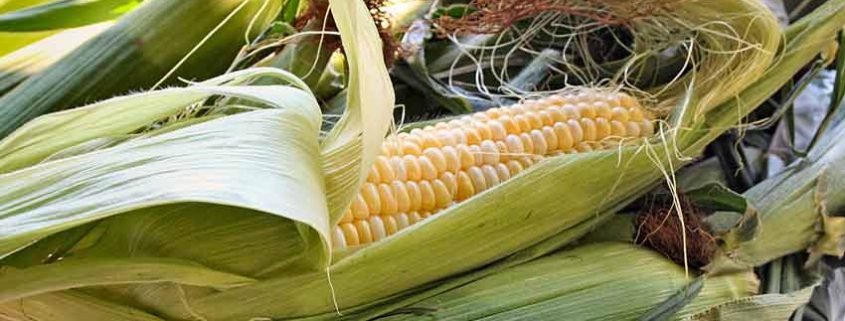


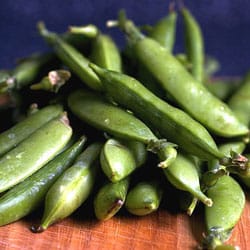
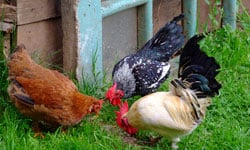
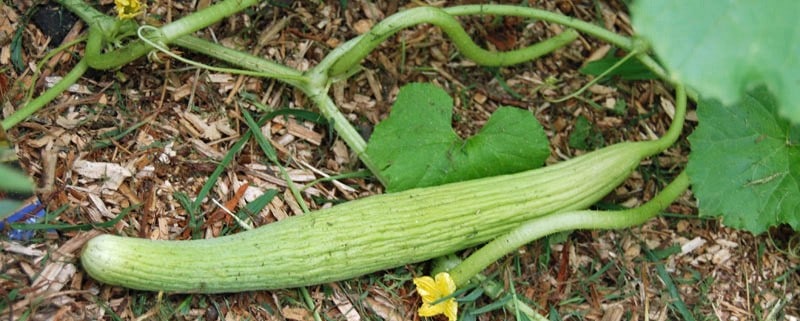
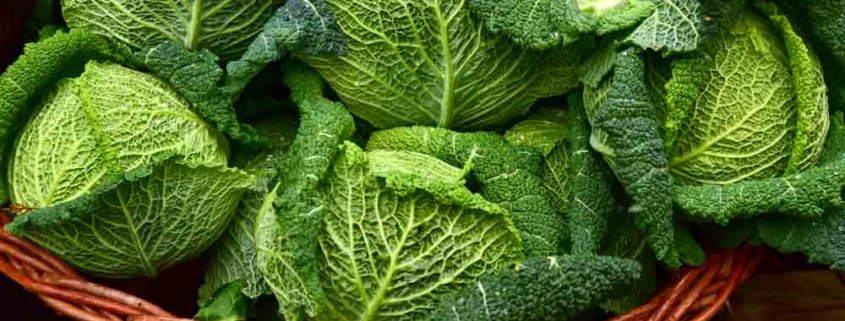 © 2024 Terroir Seeds | Underwood Gardens
© 2024 Terroir Seeds | Underwood Gardens